Rimini's historic centre, also known as the old town of Rimini, located in the heart of the resort, near the canal of Rimini and near the train station.
The old centre of Rimini can boast of its size, but in its preserved architectural and historical sights.
The old town of Rimini is: narrow streets lined with ancient buildings, many of which are of historical and architectural value, as well as small squares and museums, plenty of cafes and restaurants, shops and souvenir shops. All of this takes us back to medieval times and it is in the old centre of Rimini you can experience the true Italian flavor, touching the history of the city.
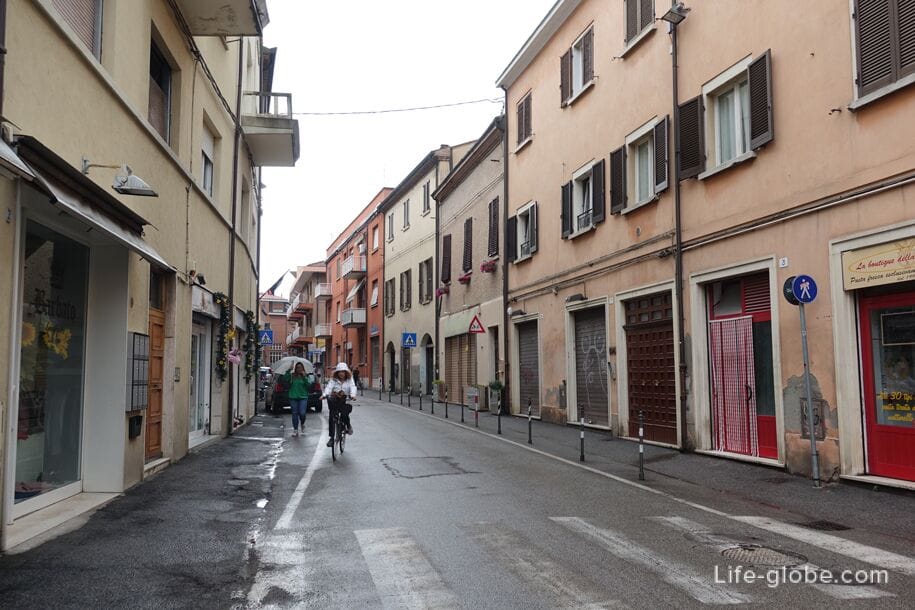
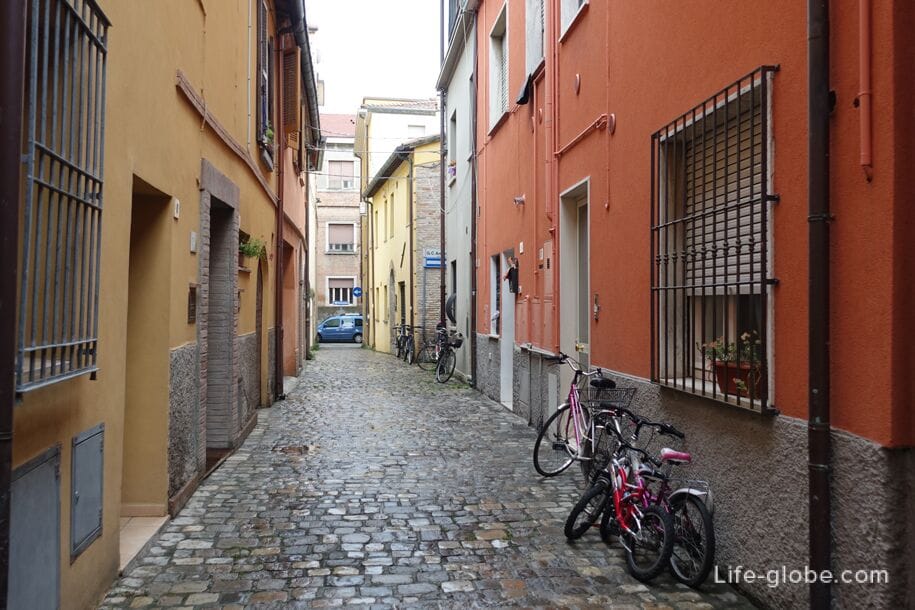
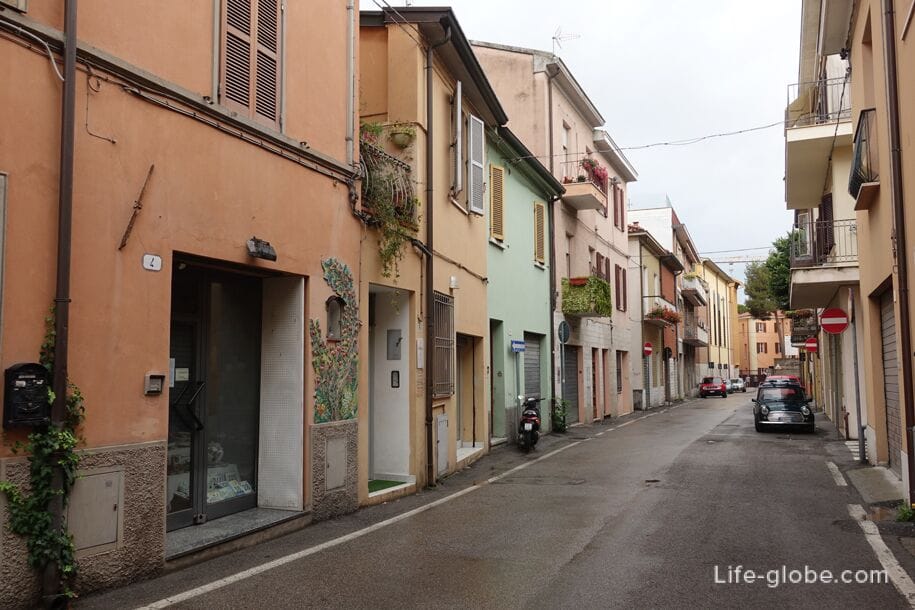

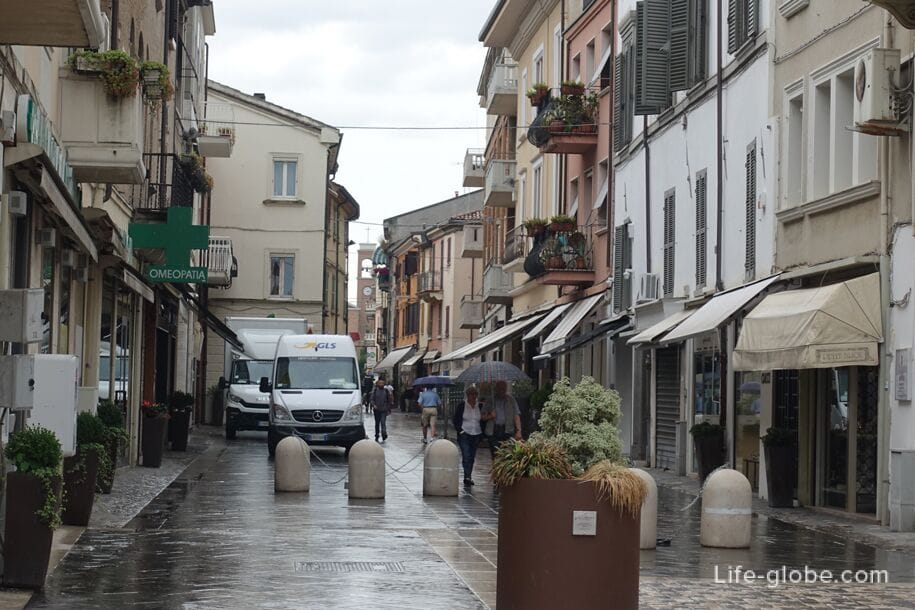

The main street of the old town of Rimini
The main street of the historical part of Rimini road is August - Corso d'Augusto, connecting the Augustus arch, the bridge of Tiberius and conventionally cutting the old town of Rimini into two parts - East and West.
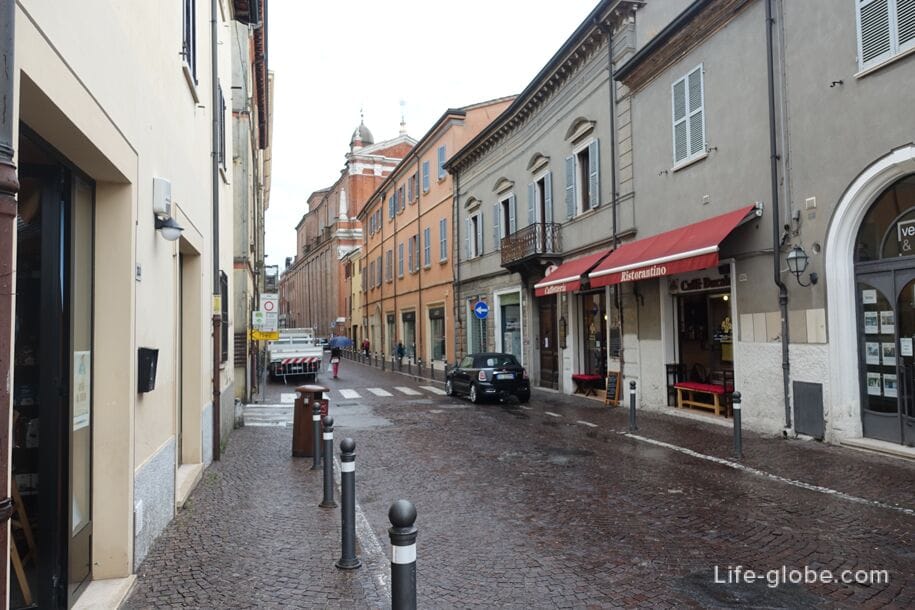
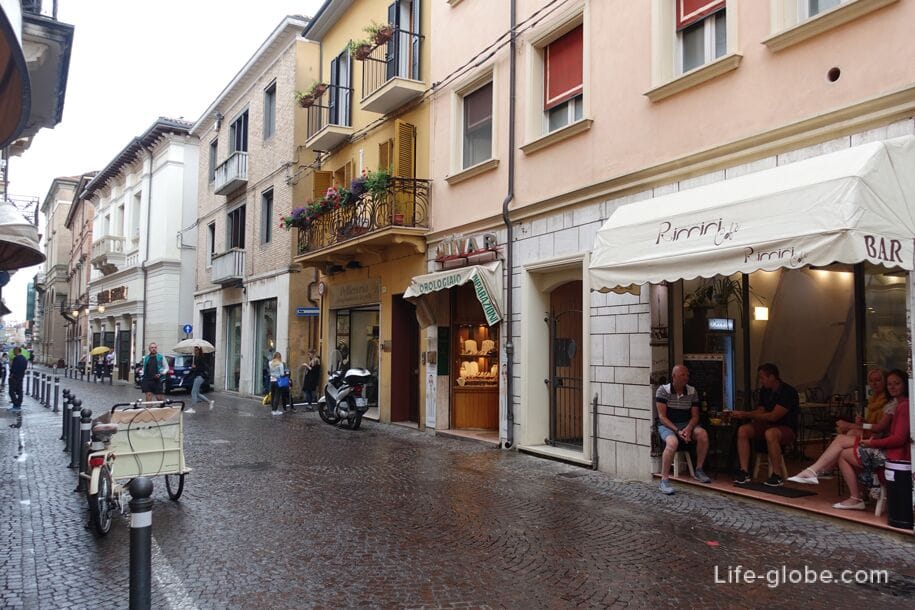
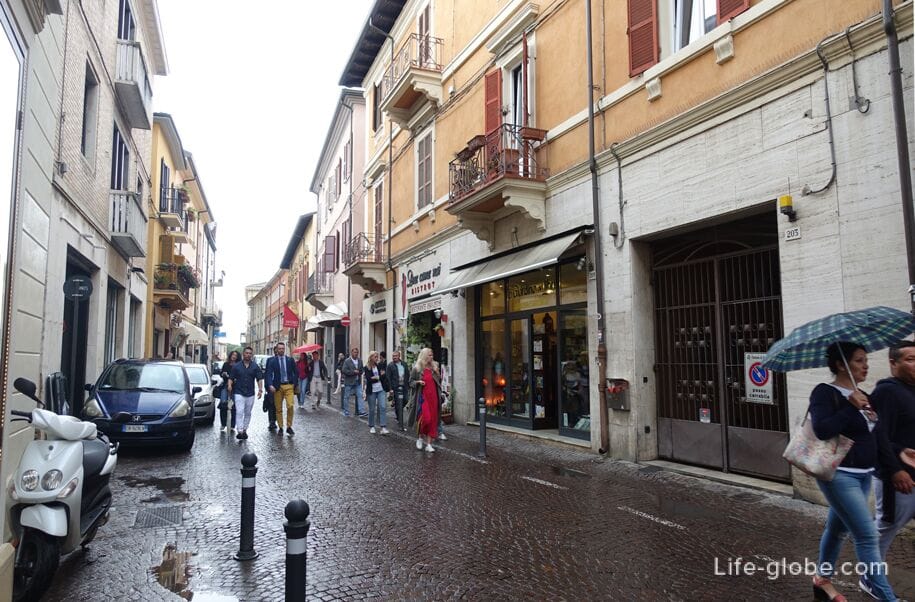

Attractions road Augusto
Arch Of Augustus
The triumphal Arch of Augusto (Arco di Augusto) is one of the main attractions of the old town of Rimini. This arch marks the main entrance (main gate) in the old centre of Rimini.
The arch is located on the South side of the old town. The arch of Augusto was built in 27 BC, then it was a city gate and was built into the defensive walls of the city, marking a main road in Rimini.
Currently arch is undoubtedly one of the most famous and important Roman monuments in Northern Italy.
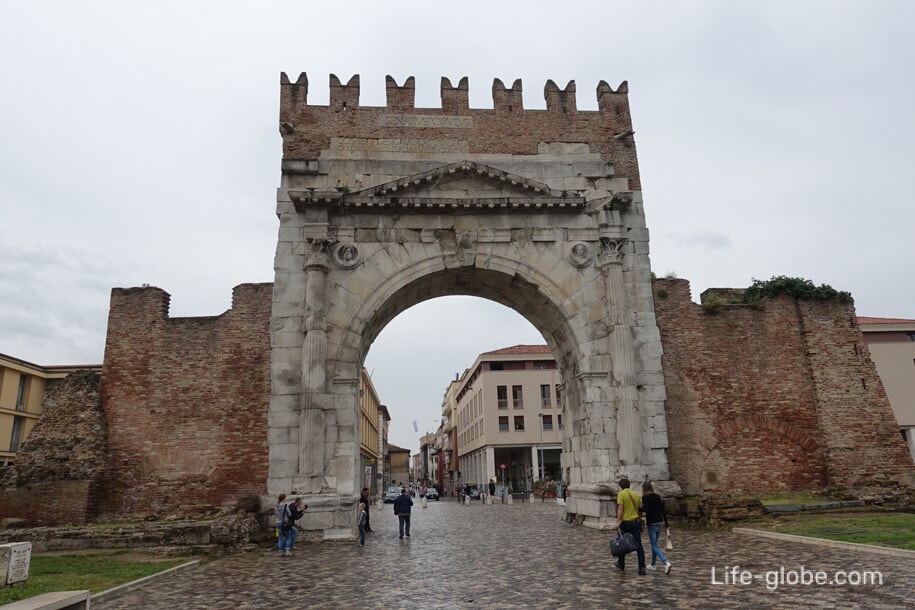
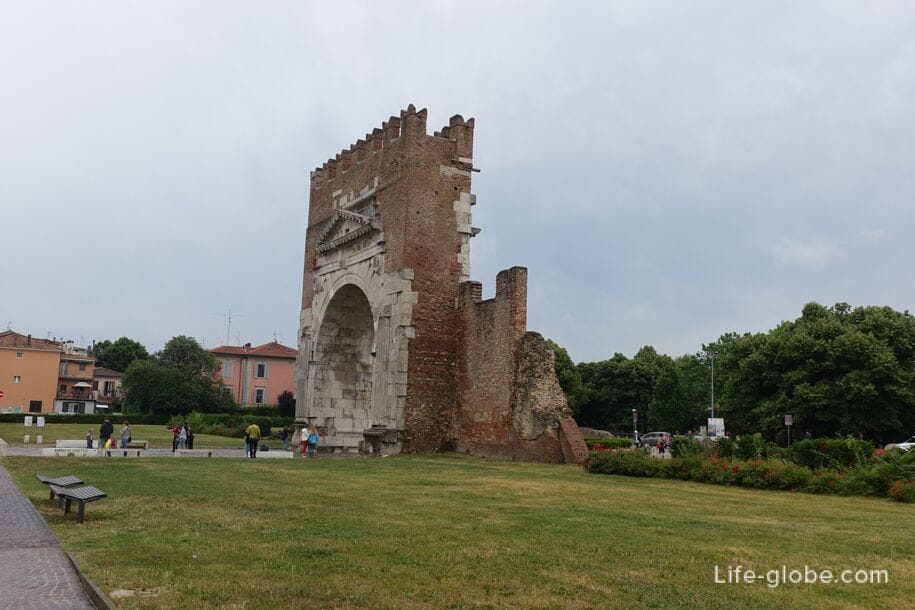
If from the arch of Augusto to move to the center of the old town on the same street Augusto, we will go to the second, but not least, the sights of the "old" Rimini - Piazza Tre Martiri.
Photos street Augusto from the arch of Augusto to Piazza Tre Martiri
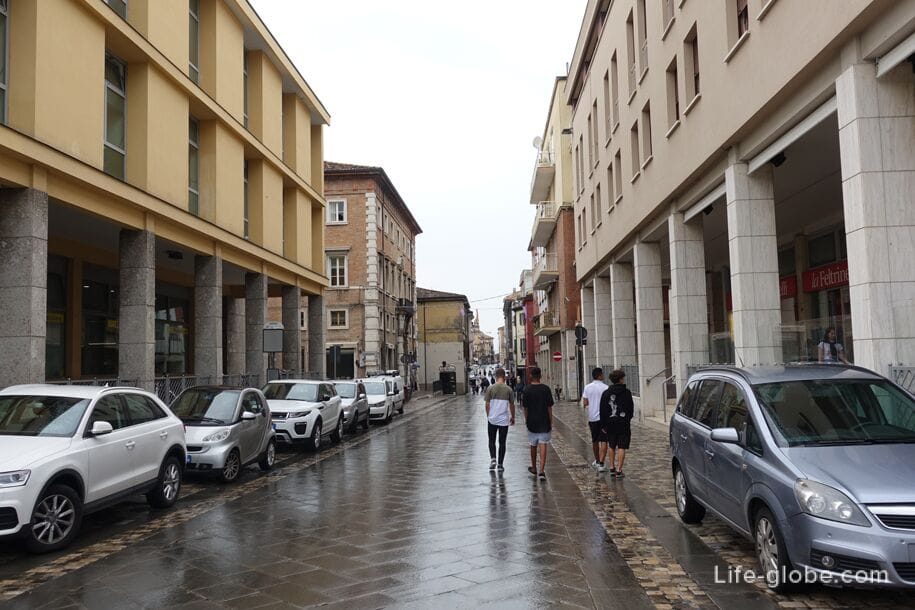
Three Martyrs Square
Three Martyrs square, or Tre Martiri (Piazza Tre Martiri) is one of the Central squares of the historic centre of Rimini, graysha an important role in the formation and life of the city past centuries.
The square is located the Roman forum, where his legions were Julius Caesar.
The history of the square dates back from the 2nd century BC. In the middle ages the square was the market place, as well as knightly tournaments. Throughout its history, the square has changed several names. Named "Tre Martiri", which translated from Italian means Three of the Martyr, the area received only after the Second world war, as a reminder of the murder of three young partisans who were executed in this area in 1944.
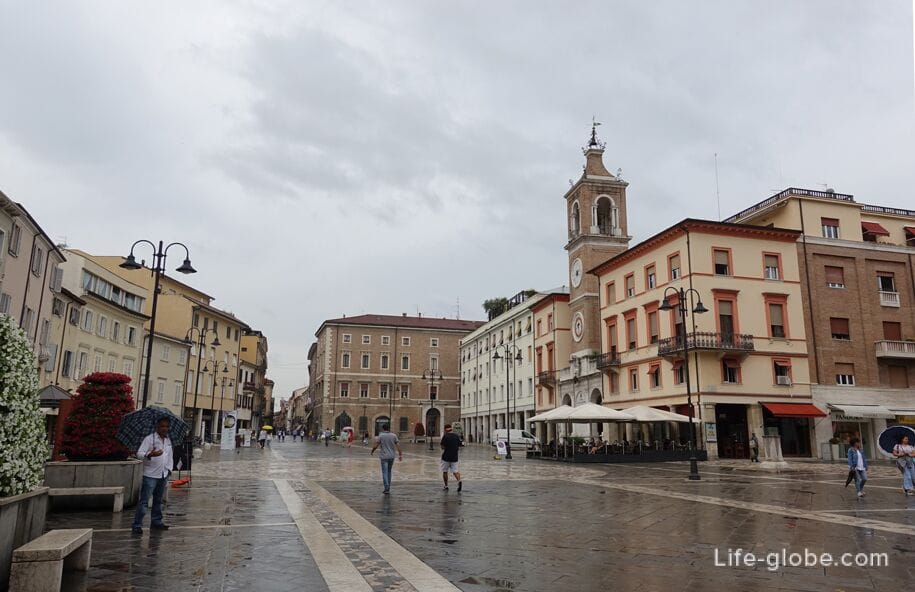
In Piazza Tre Martiri concentrated famous sights such as:
- Brioli Palace and clock tower, erected in the 16th and 17th centuries and is an undoubted jewelry not only the square but the whole of the historical part of Rimini;

- octagonal grey white Shrine of Sant Antonio with a green roof;
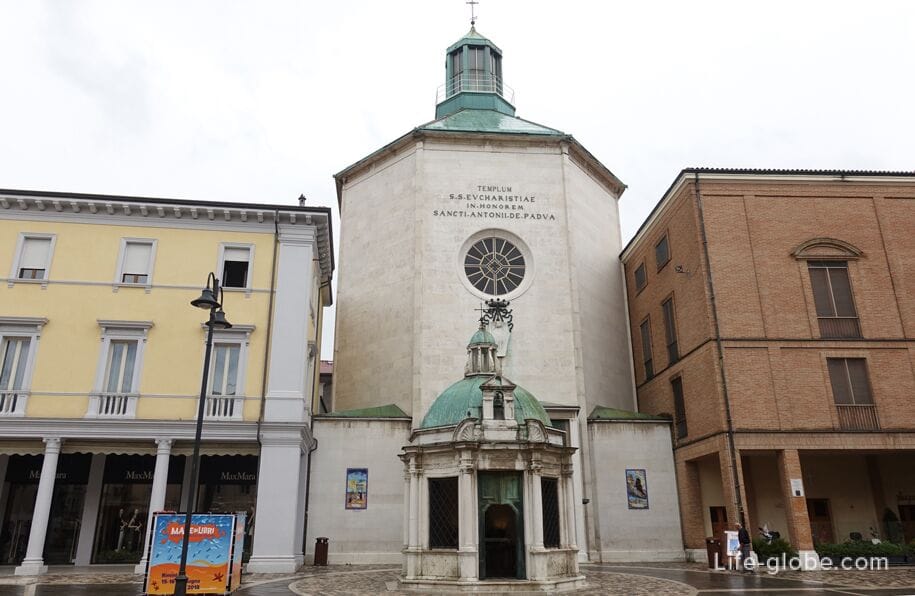
- the monument to Caesar;
- the column of Julius Caesar, commemorating the place from which Caesar addressed to the soldiers of the XIII Legion, after passing the Rubicon;
- historic excavationsindicating the presence in this place of the ancient forum and the churches. Read more about square Tre Martiri in Rimini...
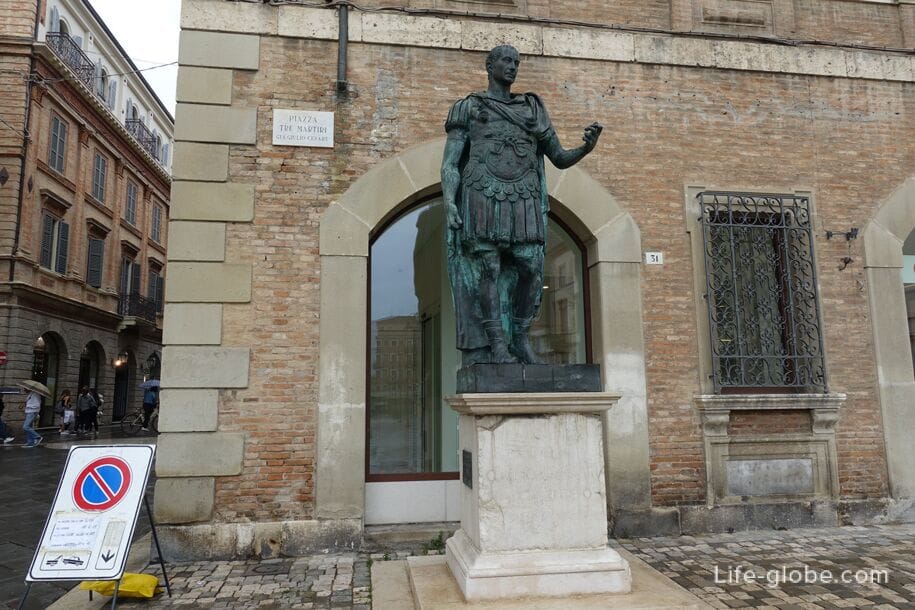

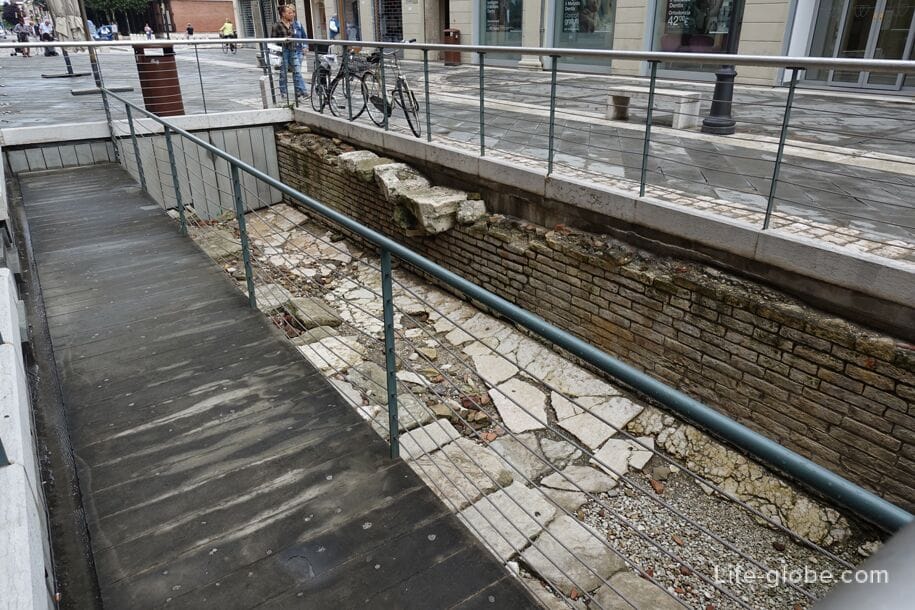
Further along the street, Augusto is the second known area of the old Rimini -
Piazza Cavour
Piazza Cavour - once played an important role and was the center of city life.
Attractions are the Piazza Cavour quite diverse. With one side of the square are shops, cafes and the old fish market, and on the other - lined up in a row of historic buildings Dating back to different eras, the construction of which was carried out starting from the 13th and the 19th centuries.
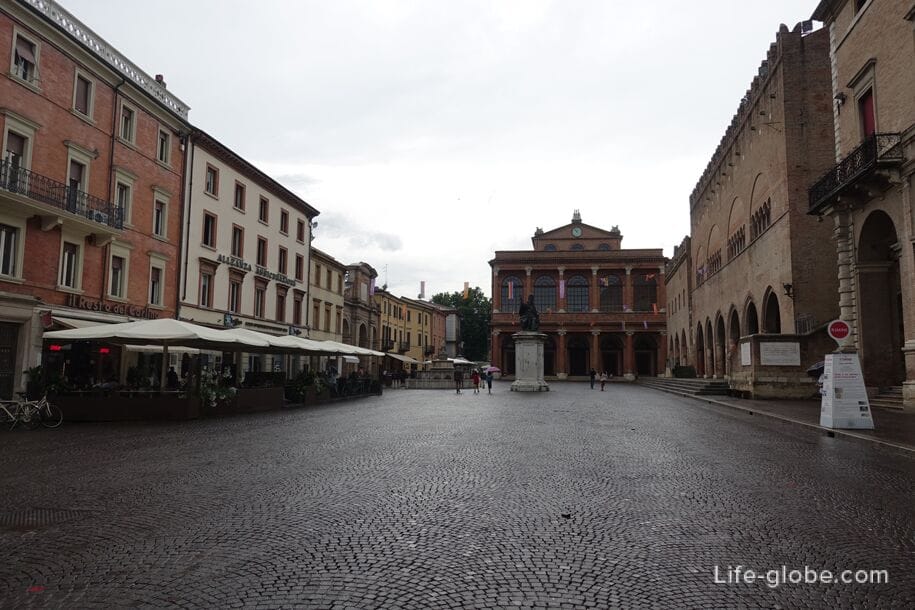
Sights Piazza Cavour:
- a monument to Pope Paul the fifth. Statue of Paul V was erected by the municipality of Rimini and opened in 1614;
- fountain Cone, or Pigna (Fontana della Pigna). The fountain was built in 1543 and was the only resource of drinking water of Rimini until 1912;
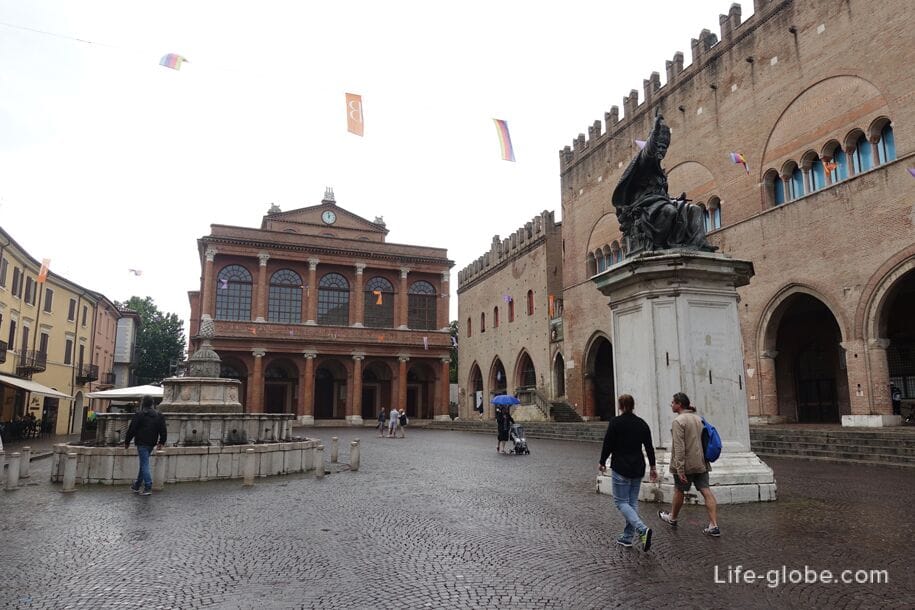
- Palazzo Garampi, built in 1562;
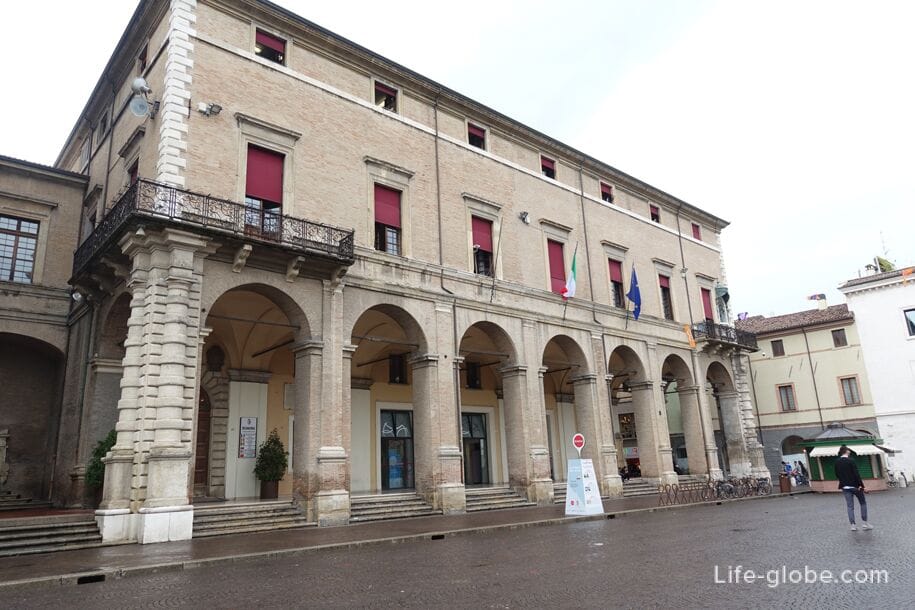
- The Palazzo del Arengo (Palazzo dell'Arengo). The Roman-Gothic crenellated building was erected in 1204 to the people. In the days when public justice was, on the porch of the building was stone, on which insolvent debtors were condemned to three strokes on the bare bottom;
- The Palazzo del Podesta. The Palace was built around 1330 as a residence for the "Gentlemen" of the city. On the ground floor you can see three Gothic arches, once the Central arch hung a rope intended for public hangings of criminals;
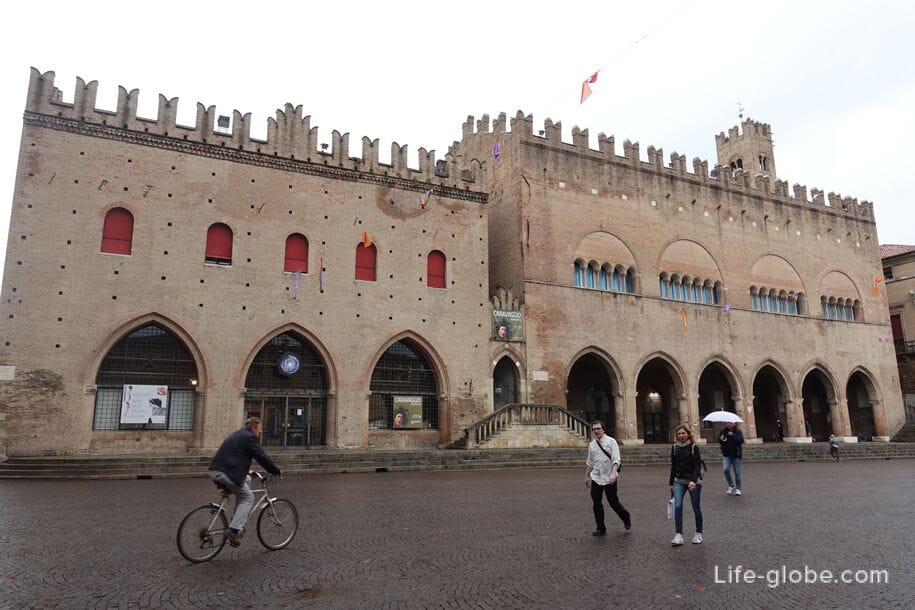
- Teatro Galli, which opened its doors in 1857;
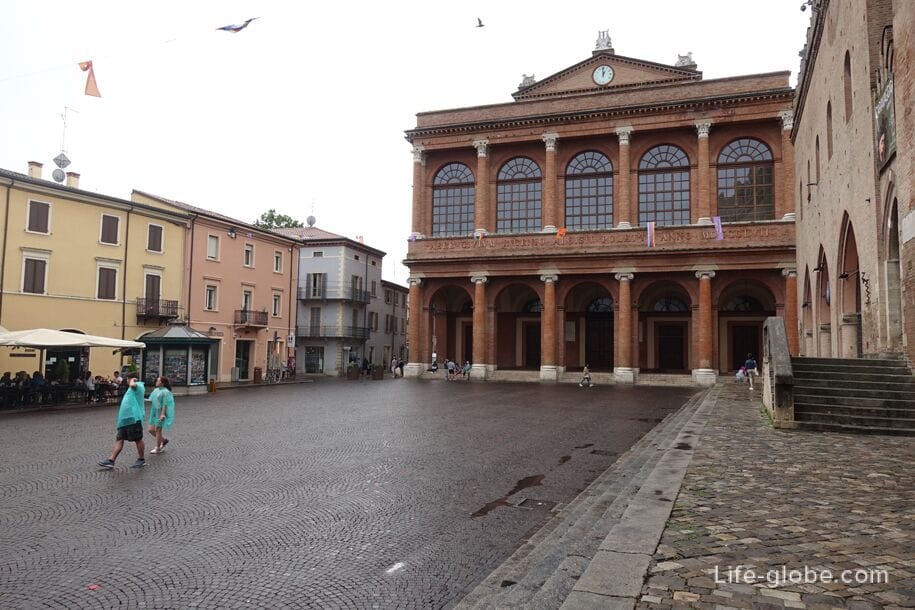
- old fish market (La Pescheria), which is one of the characteristic places in the city. In the corners of the market, there are fountains, where many years ago the merchants used to wash the fish. Read more about Piazza Cavour in Rimini...
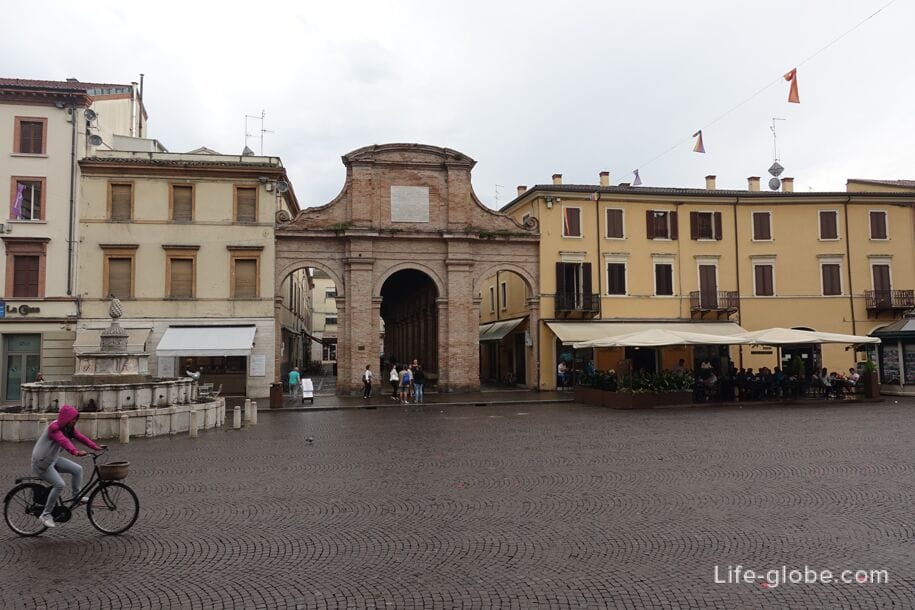
Behind the old fish market is small but very cute and cozy , the area Gregorio (Piazzetta Grigorio da Rimini).
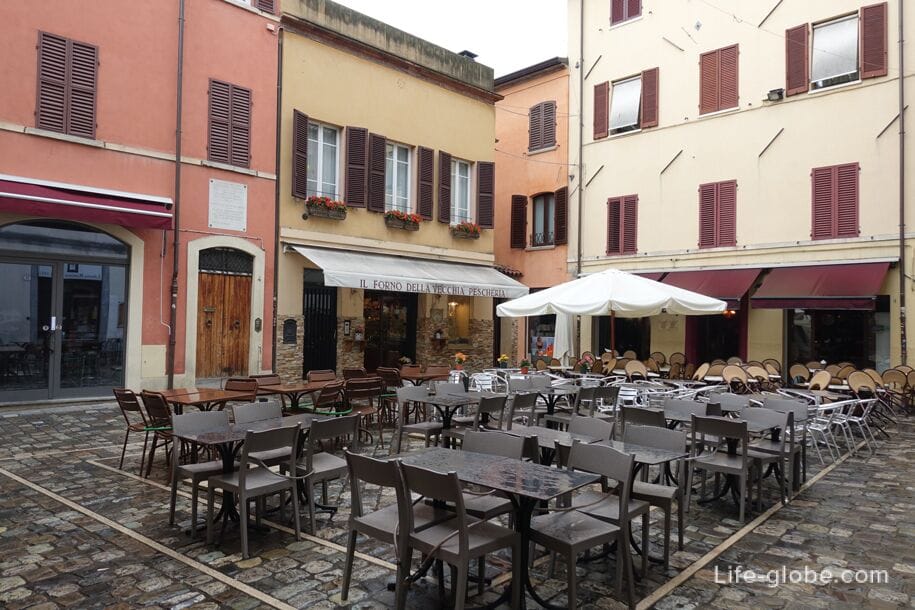
Dalley down the street Augusto located:
- small chapel;
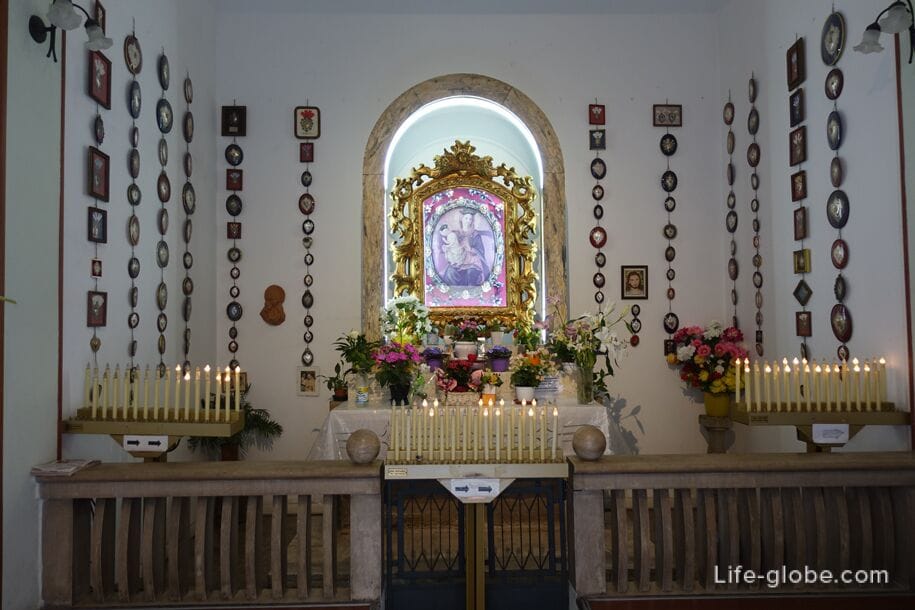
- the Church of Santa Maria in Corte (Chiesa di S. Maria in Corte o dei Servi), built in 1317 in place, donated by the family of Malatesta to the order of Servants of Mary. Originally the building was a single storey, later between 1774 and 1777 years, the Church was completely transformed by the Bologna architect Gaetano Stegani. In 1798, with the suppression of the order of servants of Mary, the Church was transferred to the Dominicans. In 1806, the Church became a parish of Santa Maria in Corte. Finally, in 1894, the facade was rebuilt by engineer Giuseppe Urbani;

- opposite the Church of Santa Maria in the Court is the Church of Santa-Maria-ad-Nives (Chiesa di Santa Maria ad Nives), prior to 1814, called Santa Maria della Misericordia (chiesa di Santa Maria della Misericordia). Sources take us to the 14th century, it was the first mention of the Church. In the mid-18th century, the Church was completely rebuilt. As of 2016 the walls of the Church runs the visitor centre.
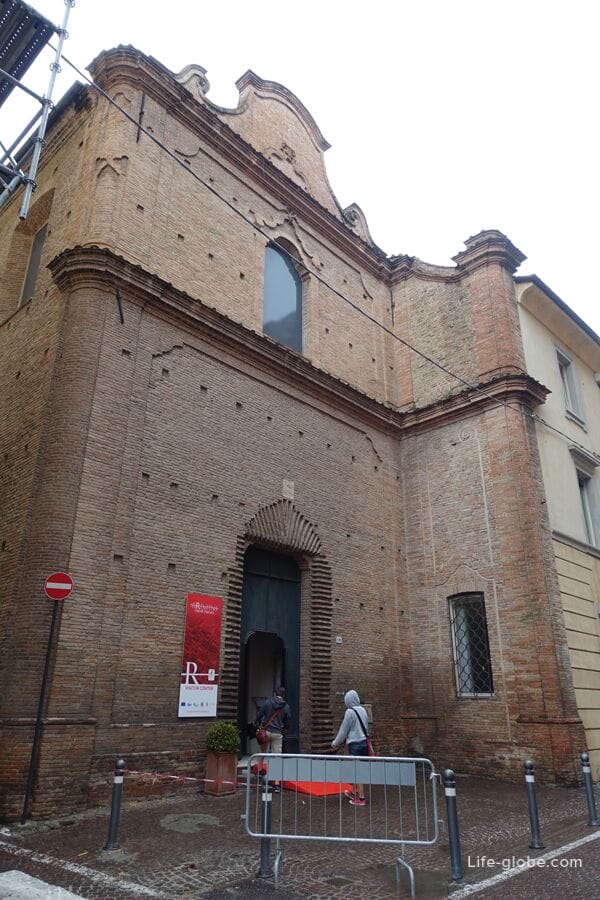
Literally 100 meters from churches is another famous and attractive sights of Rimini - the Tiberius bridge
The Tiberius Bridge
Bridge of Tiberius (Ponte di Tiberio), also known as the Augustus bridge (Pons Augustus) is the oldest bridge of Rimini is currently an architectural monument and connects the old centre of Rimini and San Giuliano.
Initially, the construction work on the construction of the Tiberius bridge began during the reign of Augustus and finished in 20 years BC, during the reign of his successor, Emperor Tiberius Julius Caesar Augustus, in whose honor and named this the Roman bridge. Read more about the bridge of Tiberius in Rimini...
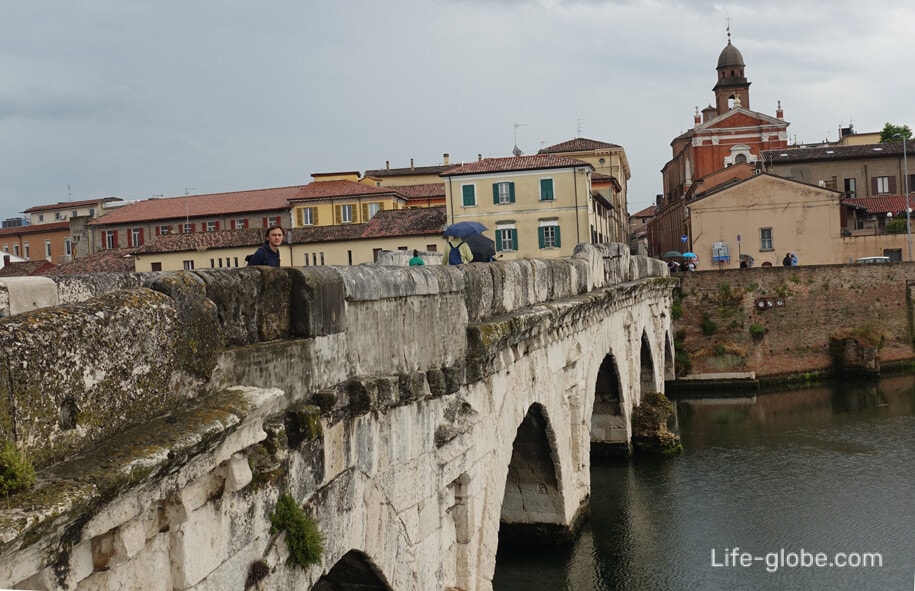
Almost immediately behind the bridge of Tiberius is a small historical quarter of San Giuliano. The San Giuliano is also known as the quarter Fellini. In this quarter grew by Italian film Director Federico Fellini.
In the historic district of San Giuliano: the small square and the narrow cobbled streets, on both sides of which are close to each other are the old colorful buildings, the facades of which you can see drawings that represent characters and places from the films of Federico Fellini. There are also several churches, among which is the Church of San Giuliano Martyr (Chiesa San Giuliano Martire) are located on the same street. Read more about the historical quarter of San Giuliano...

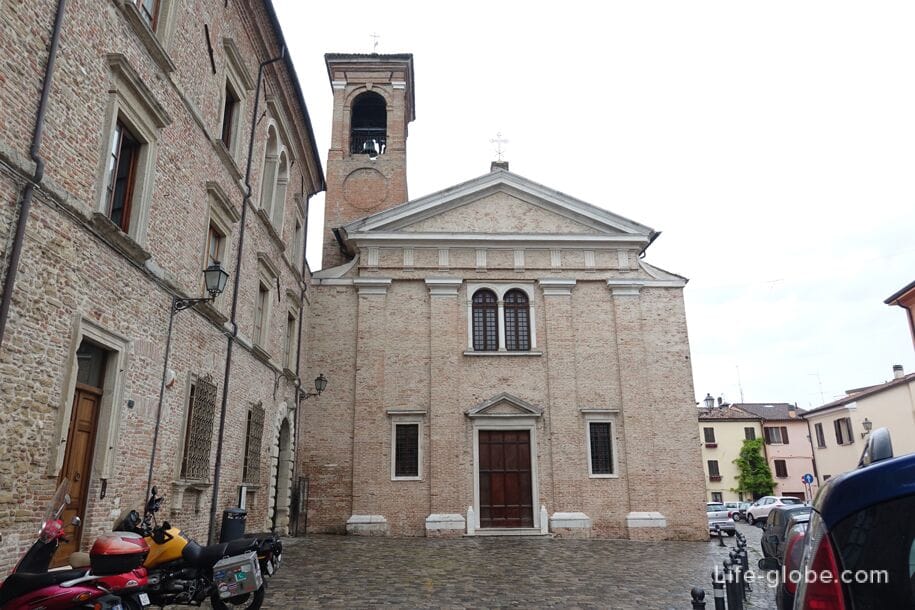
Attractions of the Western part of the old town of Rimini
On the West side of the street Augusto there are also some interesting places
Port Montanara
Port Montanara - one of the gates of the city Amerinus (now Rimini), built in the 2nd century BC.
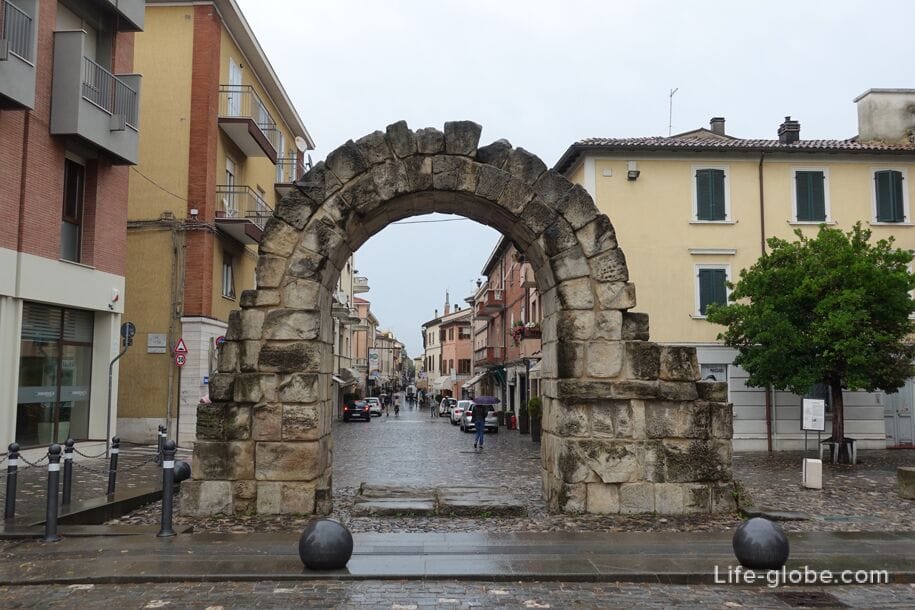
To the gate Montanara, from the old town centre of Rimini, leads the street Giuseppe Garibaldi (Via Giuseppe Garibaldi), and outside the gate, on a small Piazza Giuseppe Mazzini is a Catholic Church parish of San Gaudenzo (Parrocchia di San Gaudenzo), built in 1856. The building was destroyed by bombing in 1944. In the postwar period on the site of the former Church was built the present large Church.
Photos of Church of San Gaudenzo
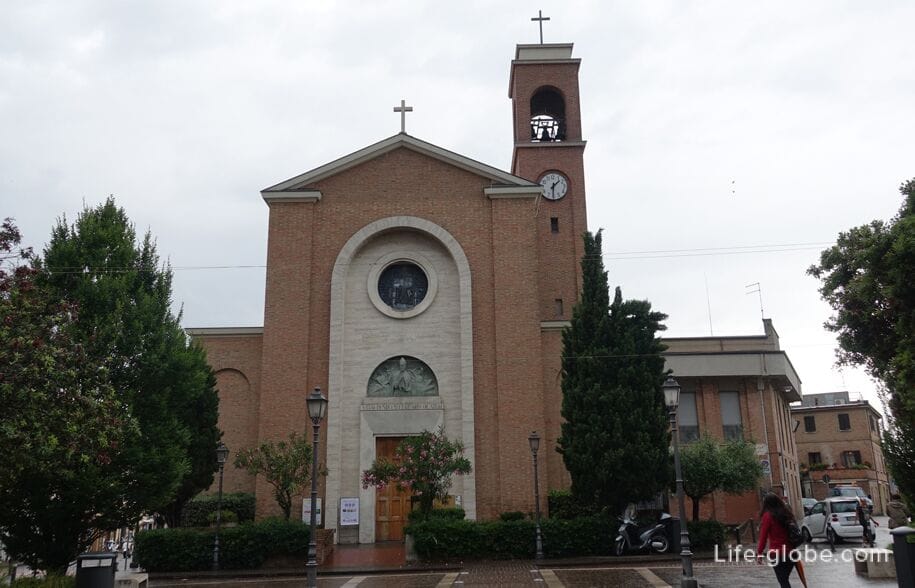
Photo of Piazza Giuseppe Mazzini and Porta Montanara
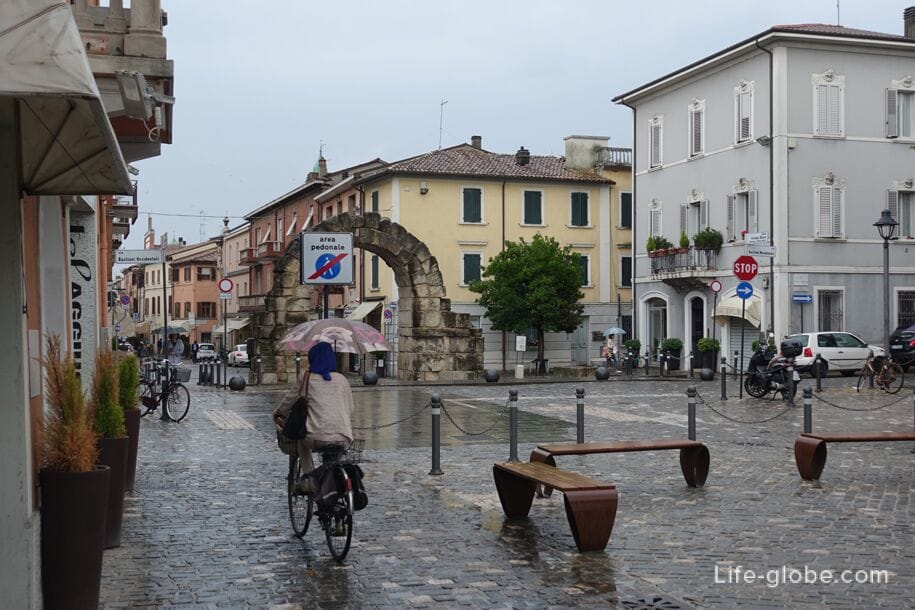
Photo of the street Giuseppe Garibaldi
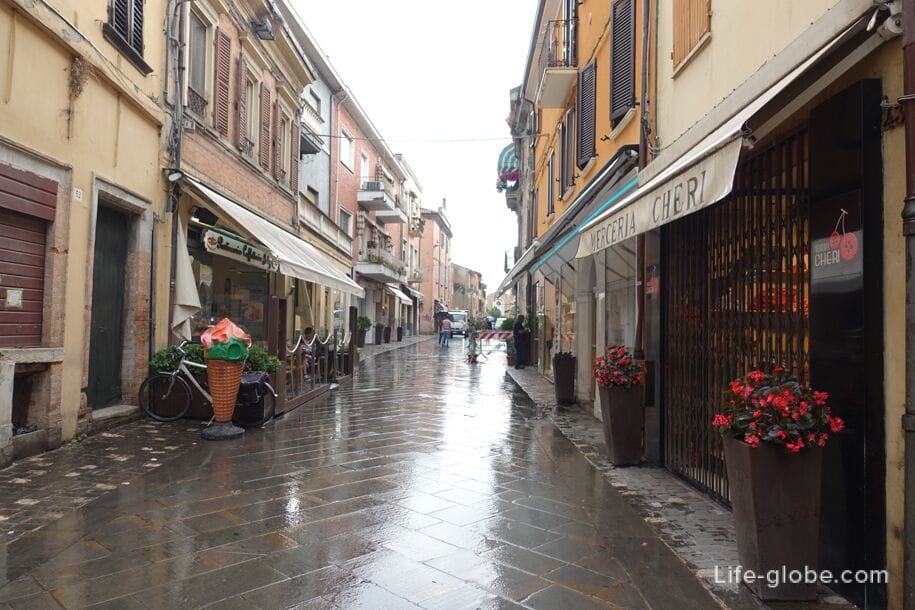
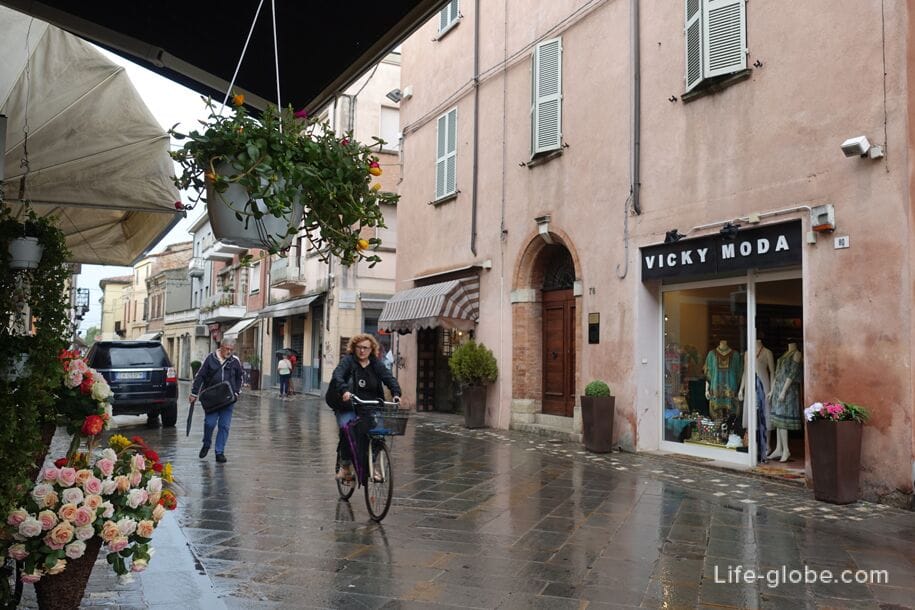


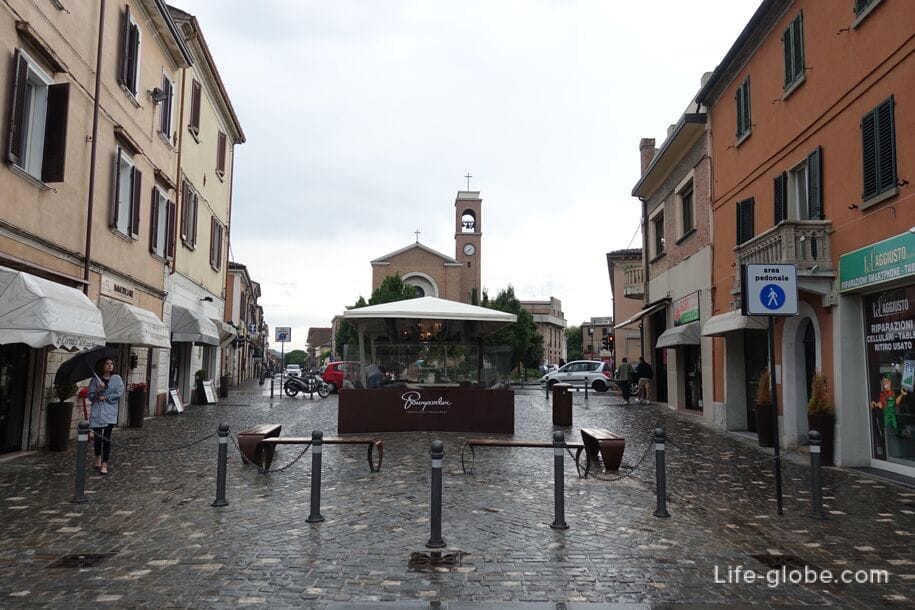
Church Of Sant'Agostino
The Church of Sant'Agostino, or Saint Augustine (Chiesa di Sant'Agostino), via Cairoli 14. The Church, which was ruled by the Augustine fathers from the 13th century until the Napoleonic suppressions, it was first mentioned in 1069 as dedicated to Saint John the theologian. In 1256 it was given to the Augustinian fathers, the parish of San Giovanni Evangelista had the pasture lands and vineyards.
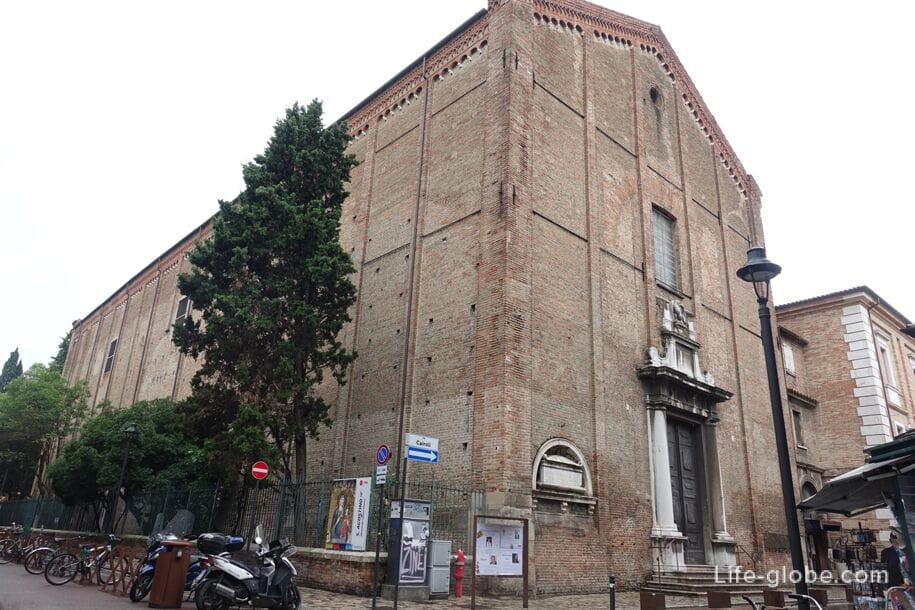
Castle Sismondo
Sismondo castle (Castel Sismondo) - built in the 15th century, is currently one of the integrity. The Central part of the castle was the residence Malatesta.
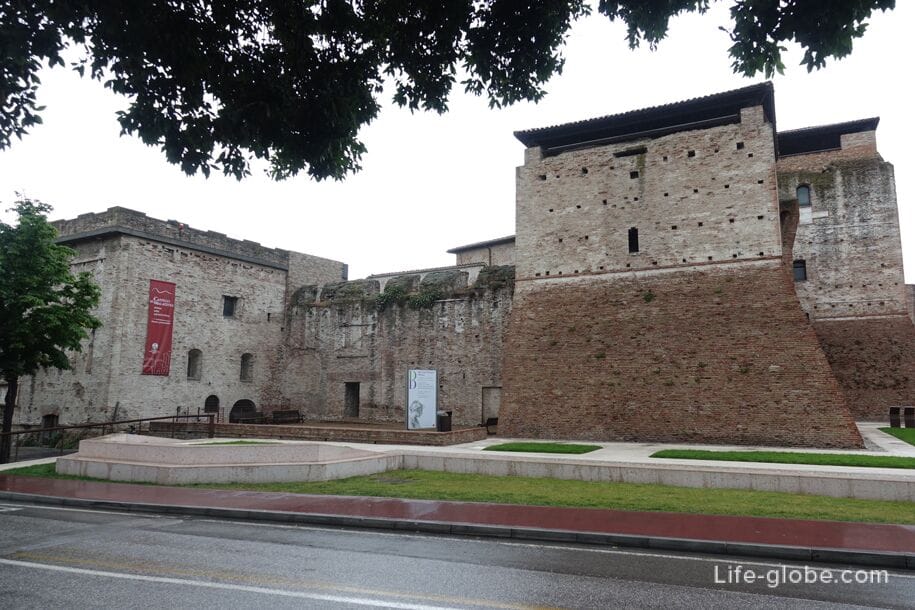
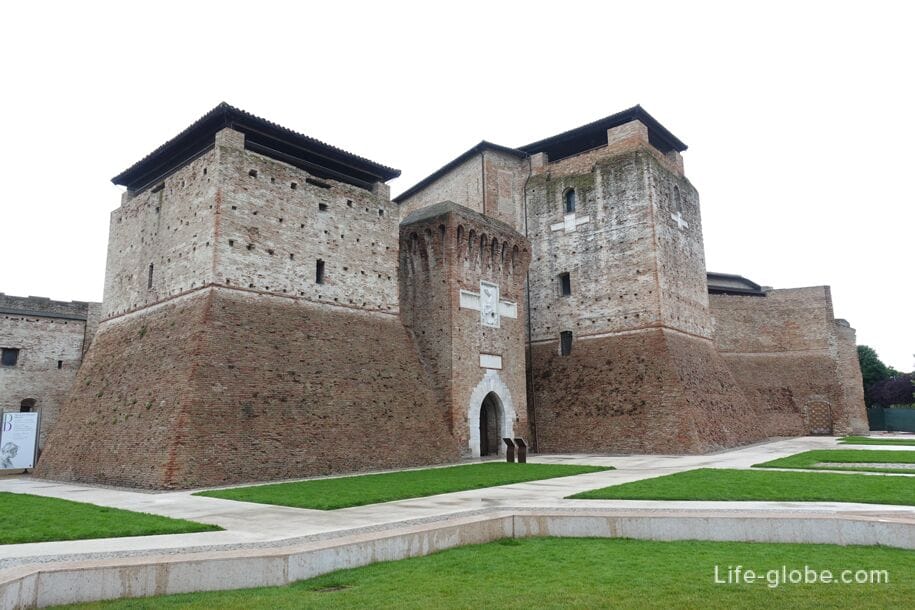

The Church of the Madonna della
Church or sanctuary of the Madonna della (Santuario della Madonna della Misericordia in Santa Chiara) is located near the arch of Augustus, at the following address: Vicolo Santa Chiara, 28.
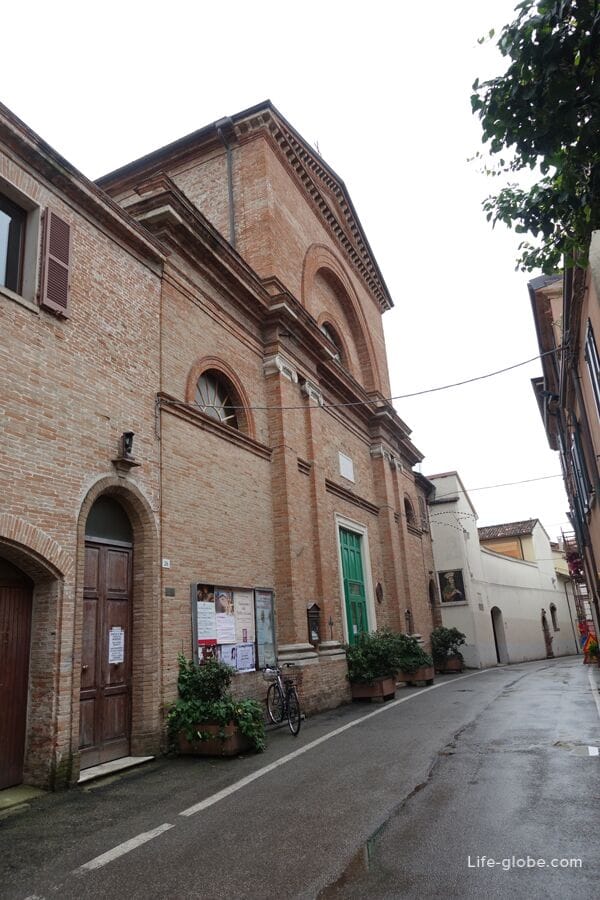
Photo street of Vicolo Santa Chiara
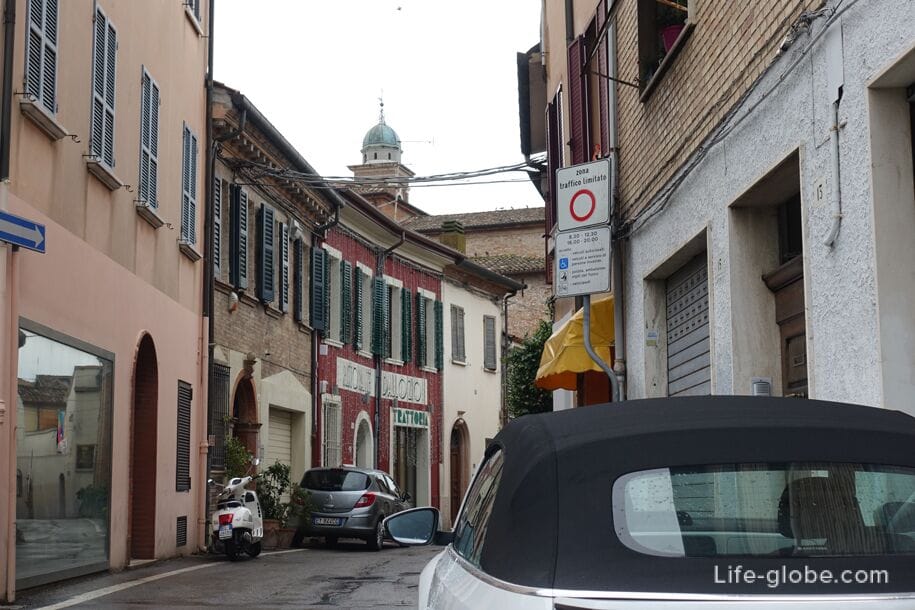
Photo Via Mangano, near the Church

Attractions of the Eastern part of the old town of Rimini
On the East side of the old town, parallel to the street Augusto is another main road, consisting of five streets, the most interesting of which is - Via Leon Battista Alberti, Via Tempio Malatestiano and Via Luigi Tonini.
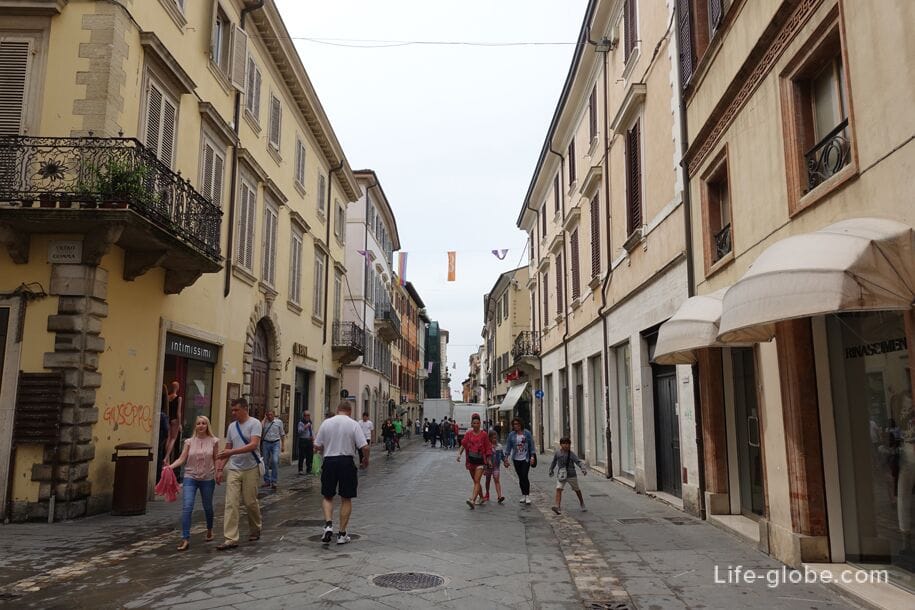
The streets are also concentrated some of the important sights of Rimini:
Cathedral of Rimini - Tempio Malatestiano
Tempio Malatestiano is the Cathedral of Rimini, built in the mid XV century by the architect L.B. Alberti as a tomb for the ruling Malatesta, hence the name of the temple. Officially the Cathedral is named after St. Francis, but this name is unpopular among tourists and locals.
San Francesco was originally a Gothic Church of the thirteenth century, belonging to the Franciscans. The original Church had a rectangular plan, without side chapels, with a single nave ending in three apses. Malatesta called on Alberti to transform the building and make it a kind of personal mausoleum for himself and his family.
The marble façade of the Cathedral is decorated with a sculptural composition that catches the eye and is what sets the Church against other churches and, in General, buildings located in the historical part of Rimini.
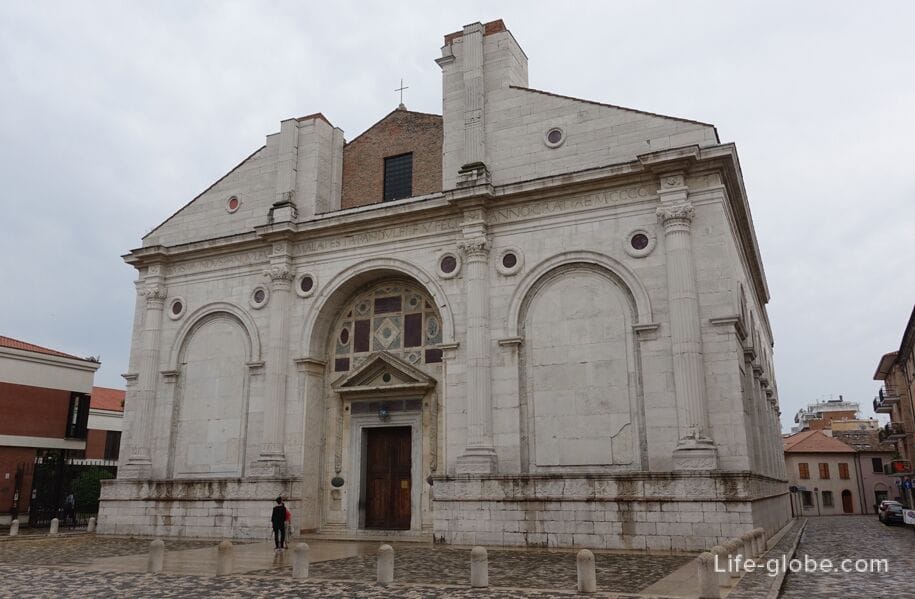
Area Teatini
Teatini square, or Piazzetta Teatini is a small green area to the will of the Cathedral Tempio Malatestiano, where you can also see the echoes of past centuries in the ruins of the Church of the fathers Teatini (Chiesa dei Padri Teatini). The Church was built between 1613 and 1629 years on the site of the former Church of San Giorgio and Anti. The Church was almost completely destroyed by bombing during the Second world war. Currently there is only one wall of the Church overlooking the gardens of Piazza Teatini.
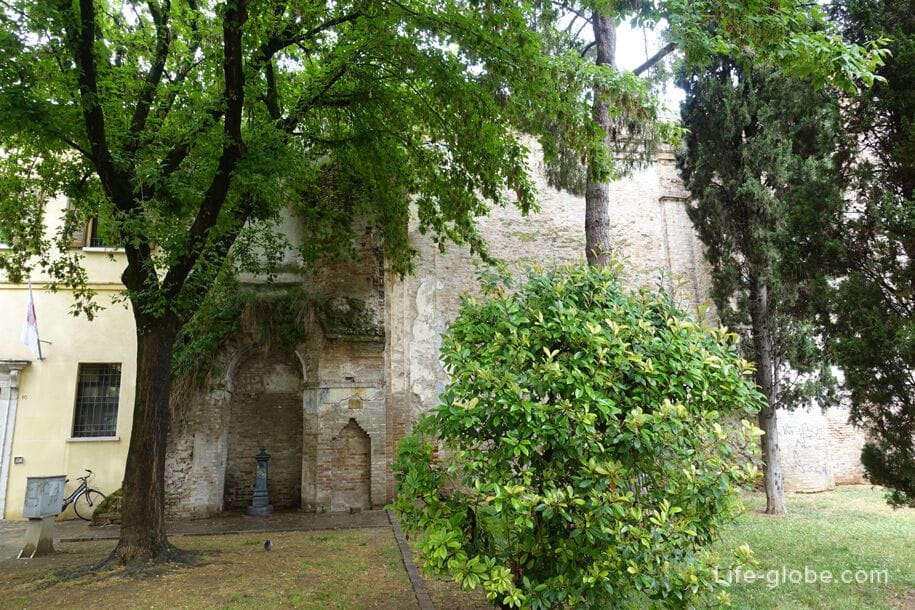
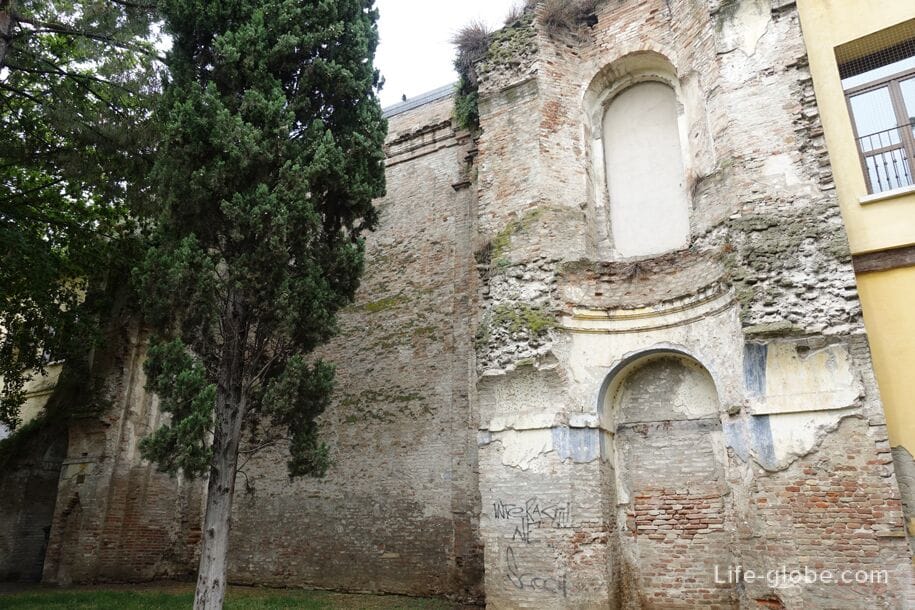
Palazzo Lettimi
Lettimi Palazzo is one of the most prestigious buildings of the Renaissance, built in the early 16th century Carlo Maski. Currently, you can only see the remains of luxury, "the survivors" after the bombing during the Second world war.
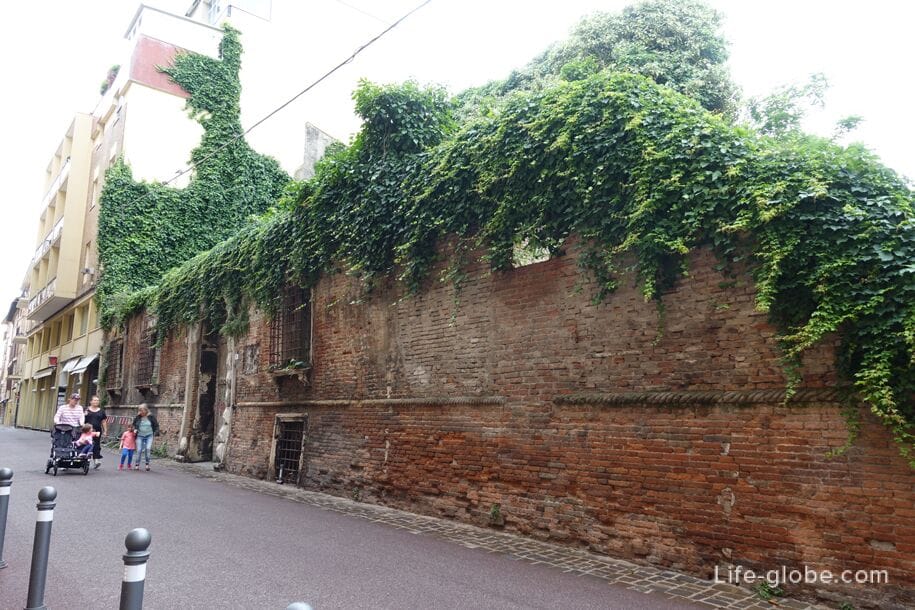
Near the Palace Lettimi is a small and seemingly inconspicuous brick Church
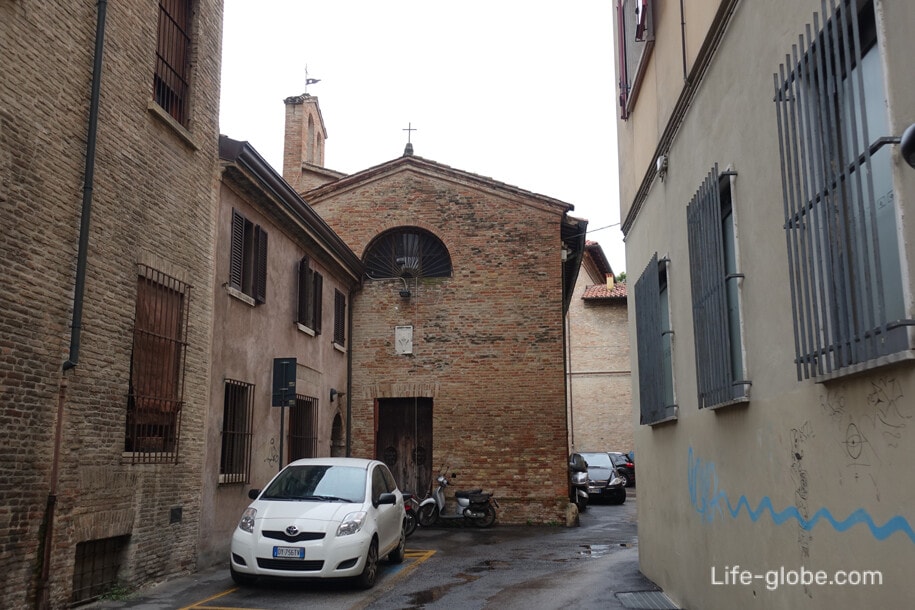
Piazza Luigi Ferrari
Piazza Luigi Ferrari, created in 1888, is notable in that it contains:
- war memorial, erected in 1926 in honor of the fallen in the First world war;
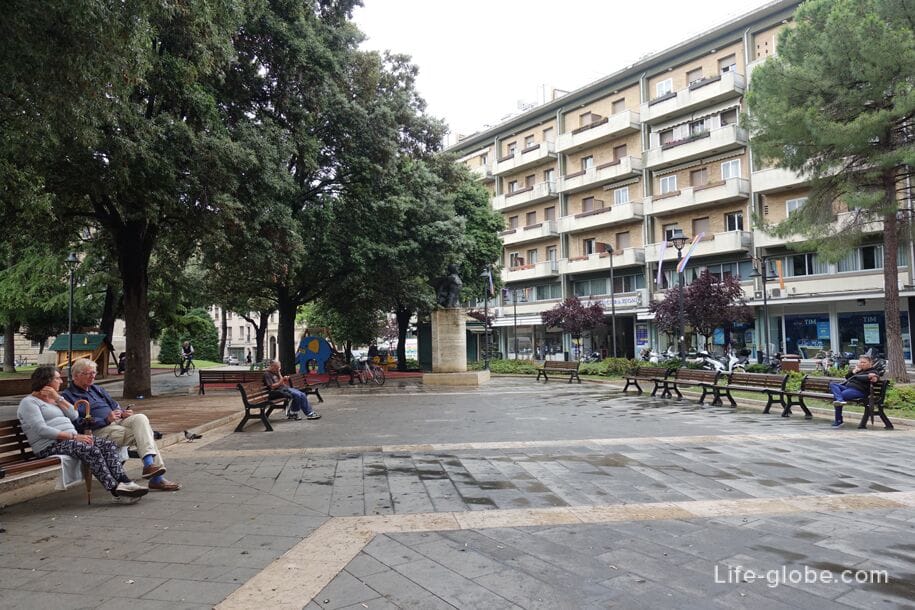
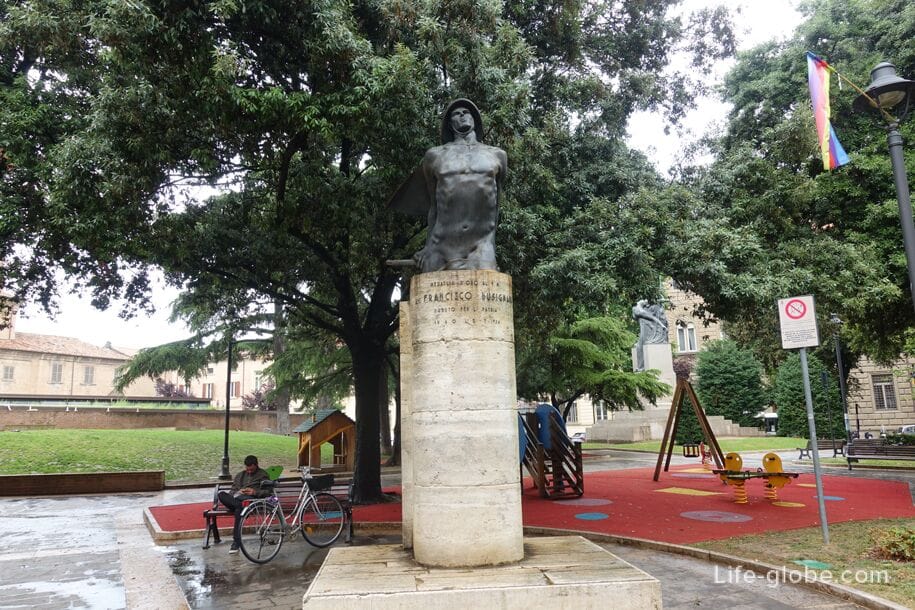
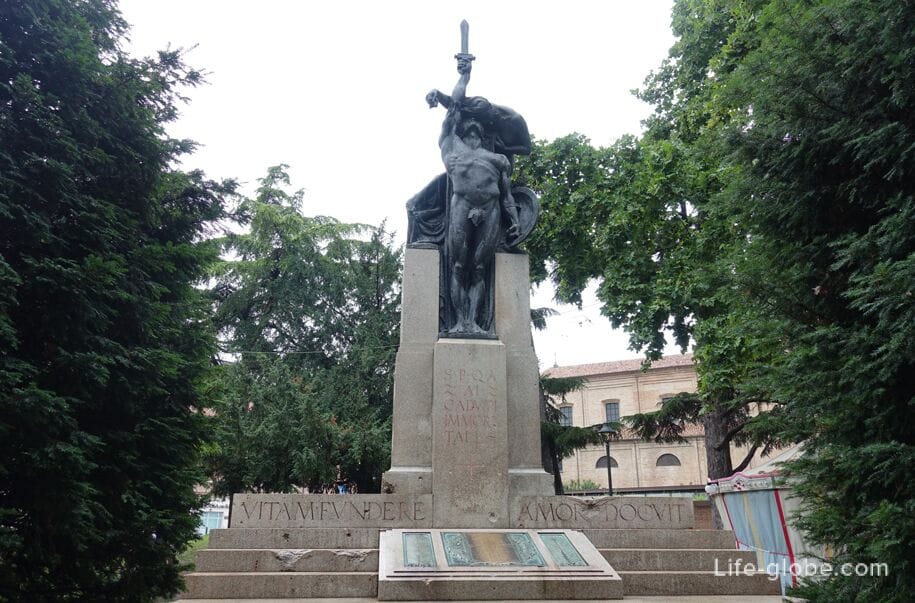
- "The house Surgeon" (Domus del Chirurgo), built in the second half of the second century and then, being a Roman house. Was discovered in 1989 and opened to the public on 7 December 2007 as a Museum. Inside the building was discovered one of the most complete sets of surgical instruments from the Roman era.
It is assumed that the name of the doctor, who lived in this place, was Eutyches, and he was a military physician of Oriental origin. From archaeological finds: mosaics, jewelry, and many written in Greek, found during excavations, the hypothesis that Eutyches were of Greek origin.
The entrance to the house-Museum paid adult ticket costs 7 Euros;
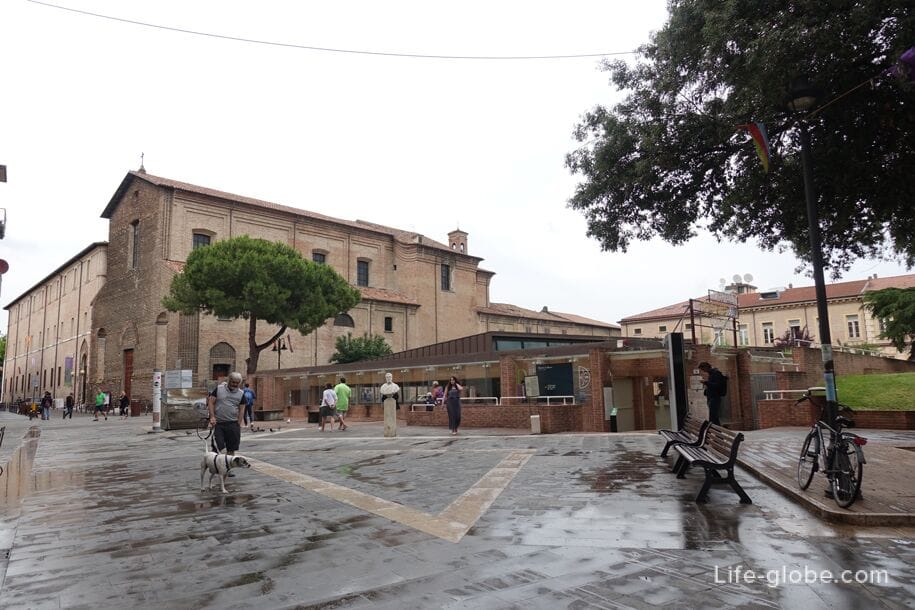
- at the corner of the square is the Catholic Church of St. Francis Xavier, better known as Pokrovskaya Church (Chiesa del Suffragio), founded in the early eighteenth century by the Jesuits.

The city Museum of Rimini
To the Church of St. Francis is adjacent to the Museum of Rimini (Museo della città di Rimini), located in the former Jesuit monastery, and the former civil hospital.
The Museum has several sections, among which deserve the attention of archaeological and medieval sections. A large space is devoted to the paintings of the fourteenth century works of Giovanni Bellini, Domenico Ghirlandaio, Guercino, Guido Cagnacci etc.
The Museum entrance fee, adult ticket is 10 Euros.
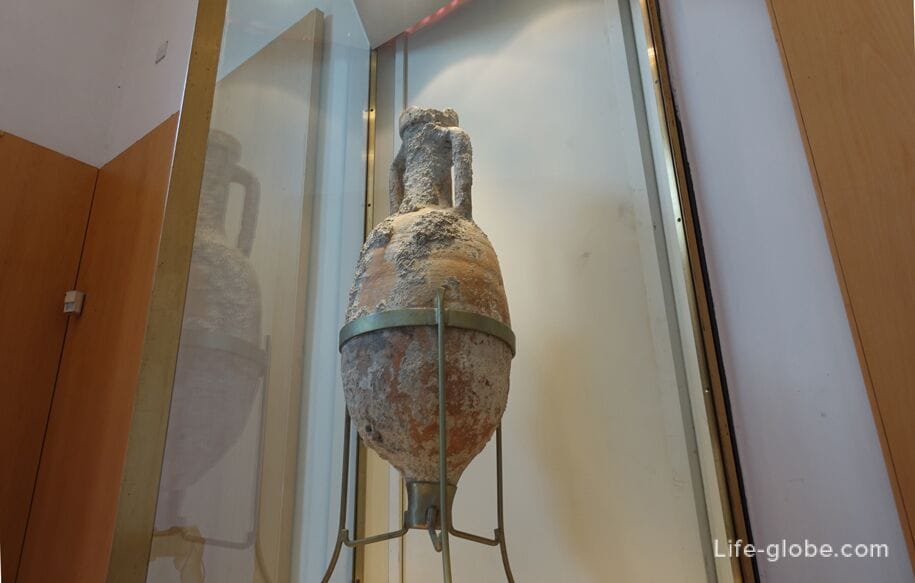
In addition to these, in the Eastern part of the old city of Rimini are:
Roman amphitheatre
The Roman amphitheater in Rimini (Anfiteatro romano di Rimini) was built in the second century ad and was used mainly for Gladiator show. As tradition for this type of buildings, the amphitheater was built on the periphery of the historical center, close to the sea, to enhance the experiences of viewers.
Currently, from the amphitheatre there are only some elements.
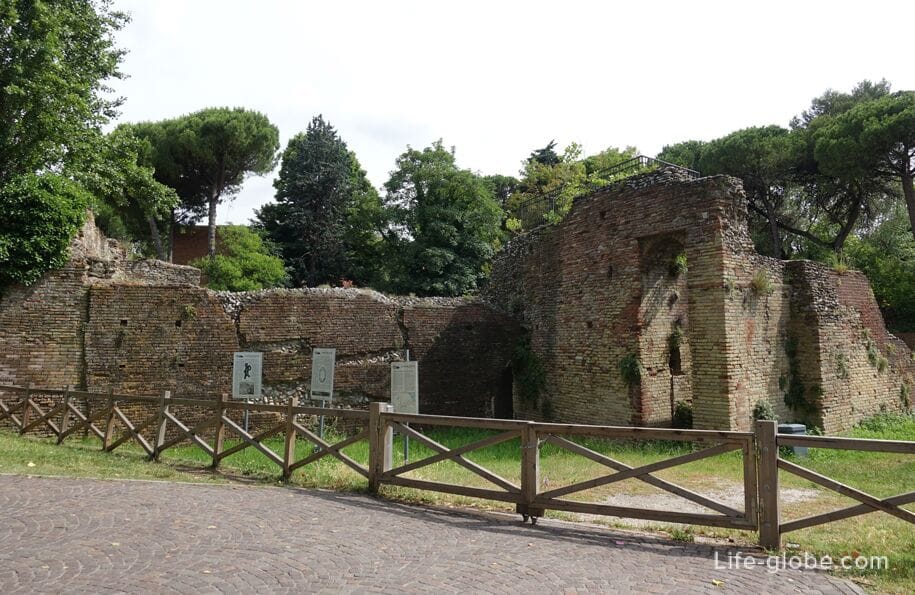
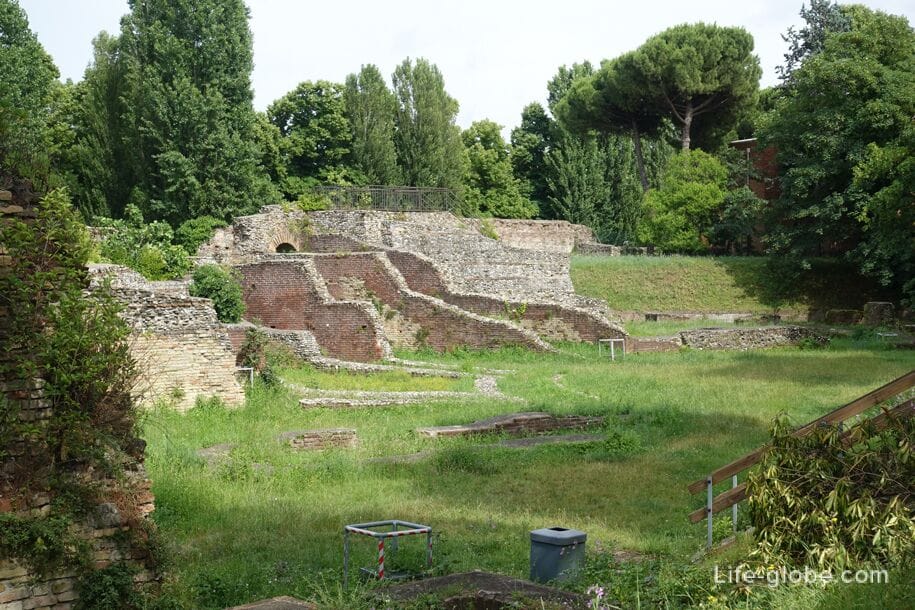
The Church Of San Bartolomeo
The Church of San Bartolomeo, also known as the Church of Santi Bartolomeo e Marino or Santa Rita (Catholic Church of Santi Bartolomeo And Marino - S. Rita) - a small Catholic Church in the Baroque style located near the amphitheater, closer to the arch of August.
The Church was founded in the 12th century on the site of the original chapel of the 5th century, dedicated to San Marino. The building of the Church was restored in 1865. The Church houses a venerated image of Santa Rita.
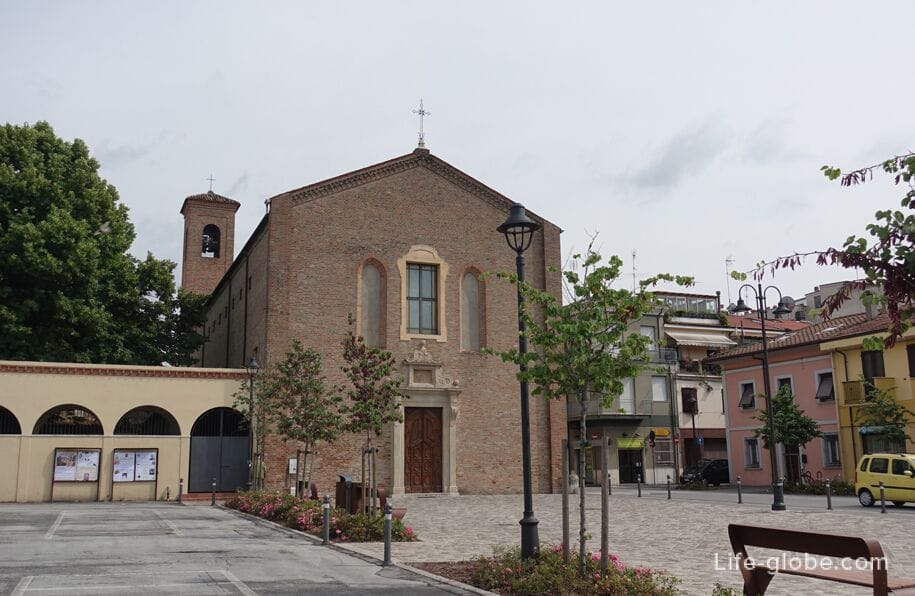
Piazza Ducale
Piazza Ducale (Piazzetta Ducale) is one of the small squares of the old part of Rimini, located close to the channel of Rimini.
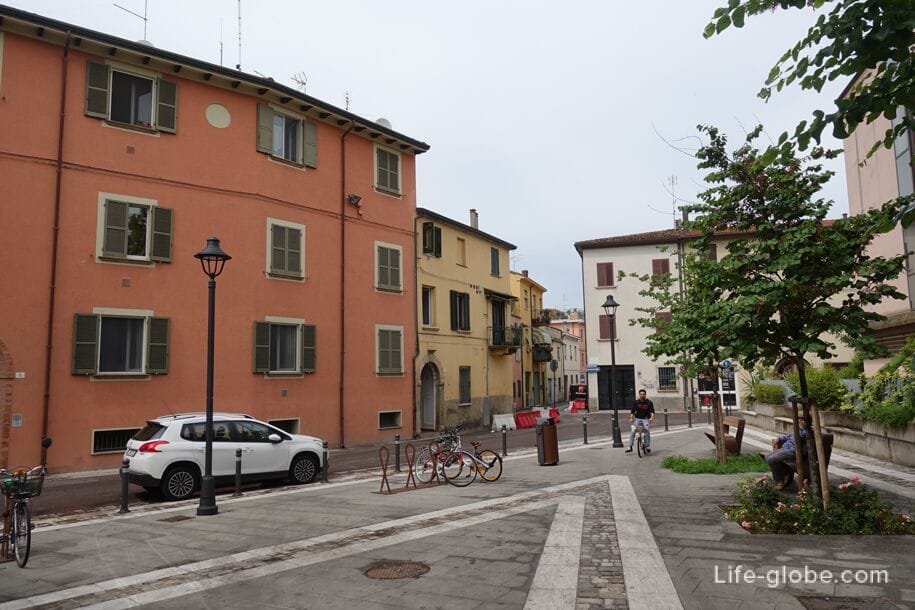
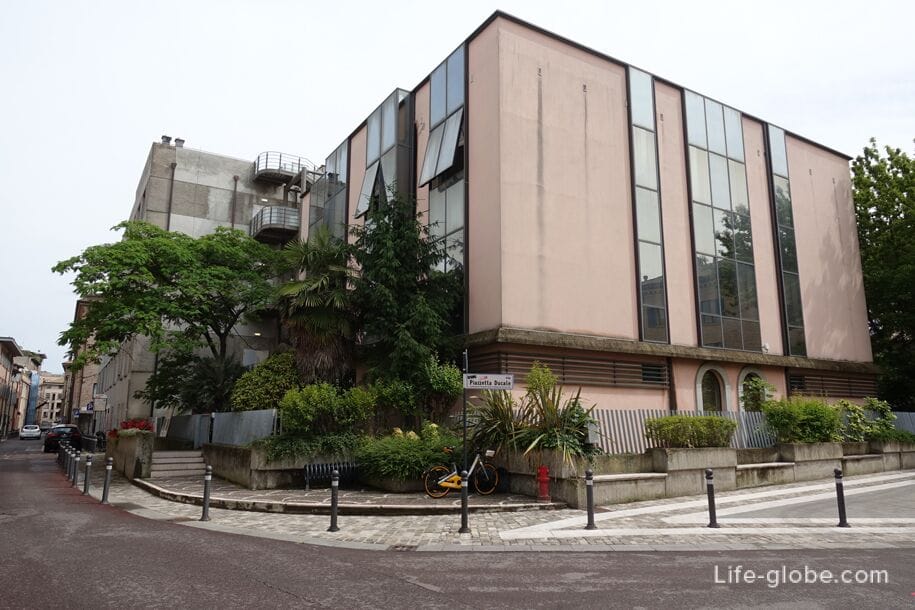
Streets near place Ducale


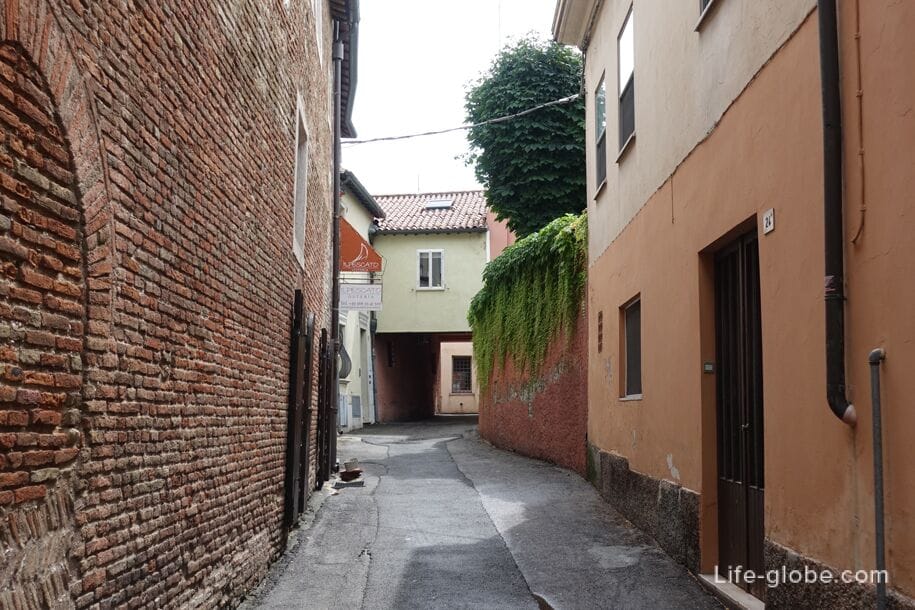
Port Galliana
Porta Galliana - old city gate of the thirteenth century, linking the old city with the port land along the canal of Rimini. Earlier the gate was part of the defensive walls.
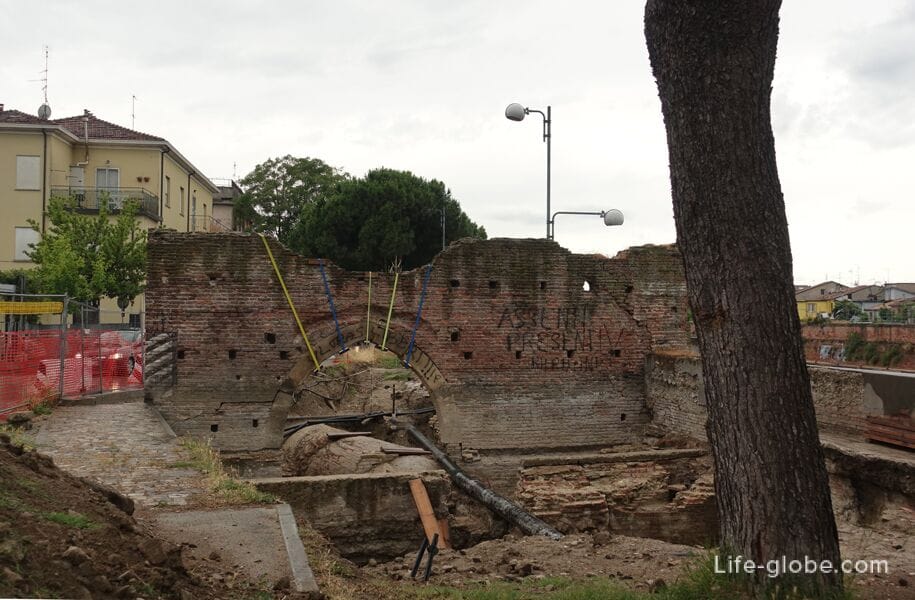
A schematic map of the main sights of the old town of Rimini
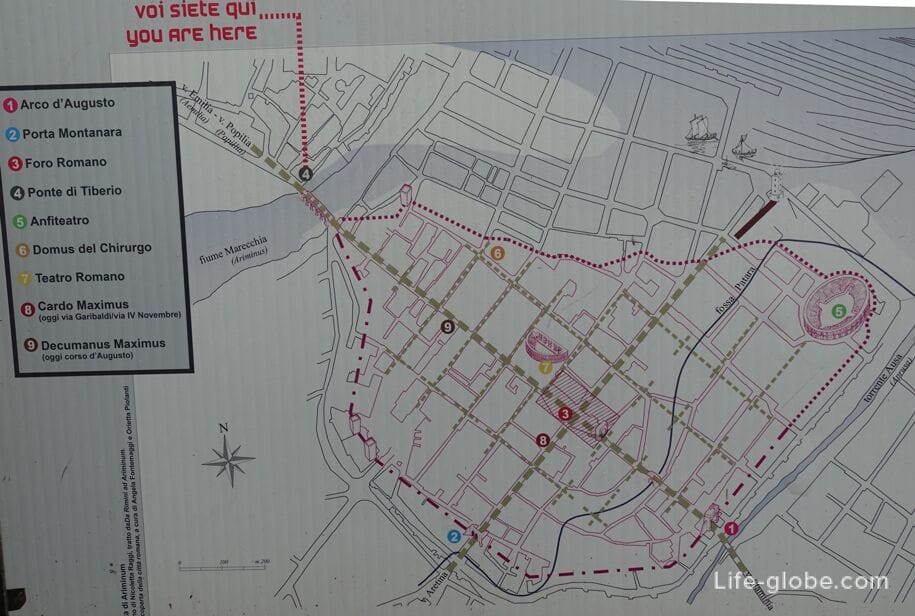
Hotels in the old town of Rimini
If you are a lover of history, narrow cobblestone streets and authentic atmosphere, the ideal accommodation in Rimini for you will be the old city center. In the historical center there are several hotels and apartments:
- The 3-star Giulio Cesare is located in the heart of the old town of Rimini. It offers rooms with free Wi-Fi and a flat-screen TV with satellite channels. In-room amenities include air conditioning, a Minibar and a bathroom with a Hairdryer. Room rates include Breakfast.
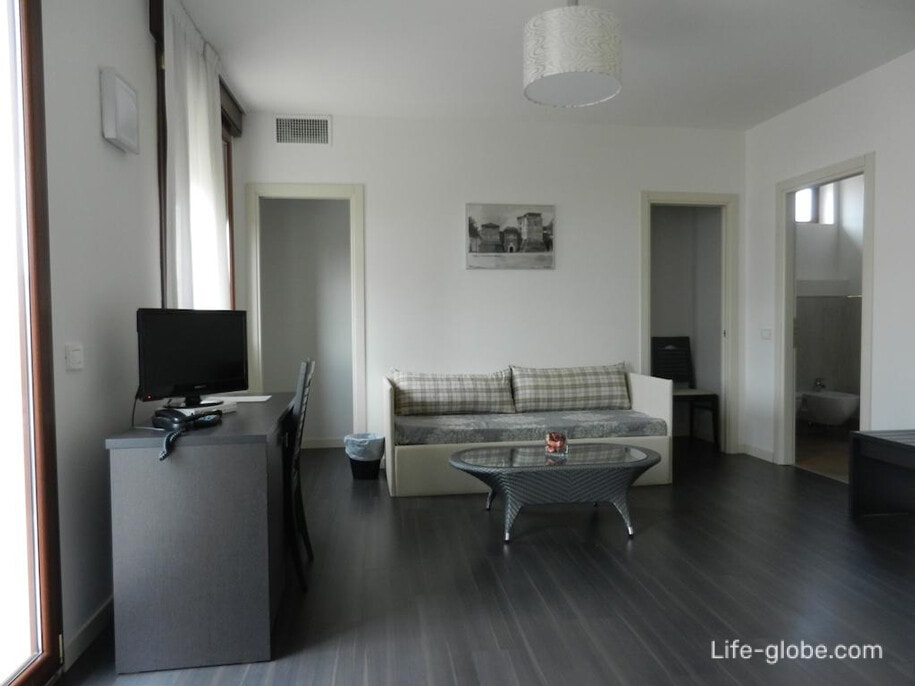
- 4-star design hotel DuoMo. Rooms with free Wi-Fi, individually decorated, using bright colors and materials such as wood and metal.

- La Casetta Con La Porta Verde free: bike rental, Wi-Fi and a washing machine. This apartment has a Seating area, flat-screen TV, a DVD player and a kitchen with an oven.
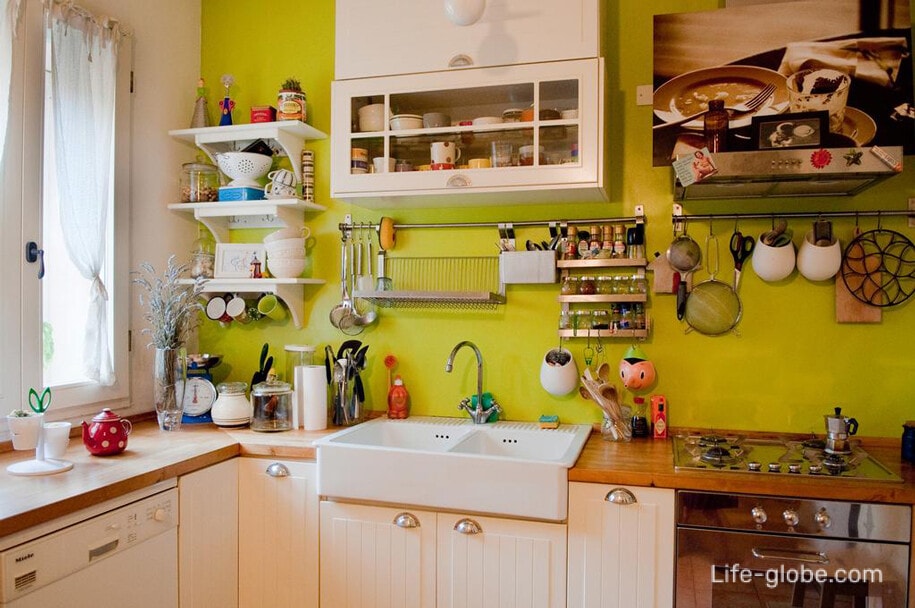
- hotel style "bed and Breakfast" Propilei di San Girolamo. In rooms: Desk, flat-screen TV, a private bathroom and air conditioning. Some rooms have a balcony. Breakfast is Italian Breakfast.
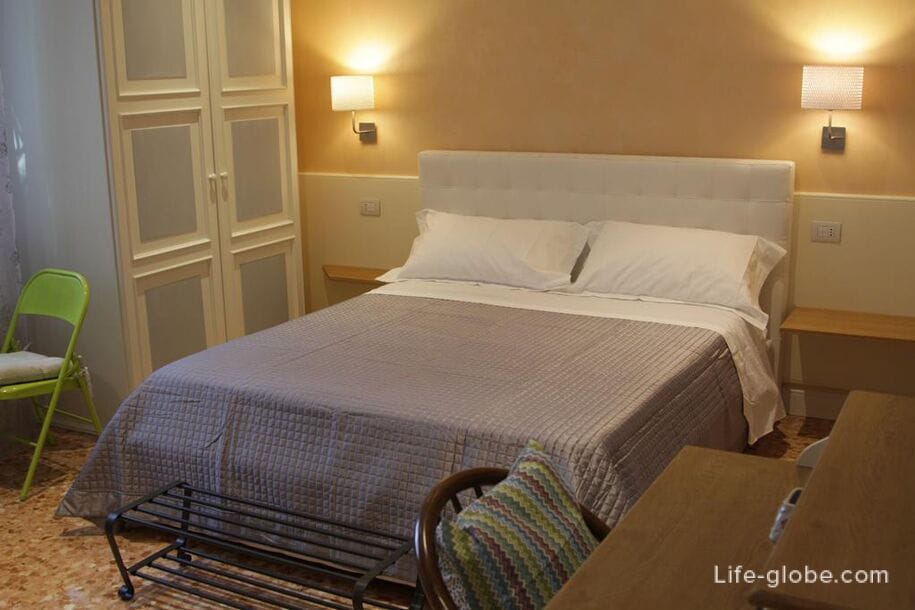
- 4-star Hotel Card International features a fitness centre and a terrace, located 150 metres from Rimini train station. Every morning a Breakfast buffet.
The rooms are soundproof and equipped with air conditioning and an LCD TV, Slippers are provided and free Wi-Fi. Work-hour bar and reception, where rental bicycles.
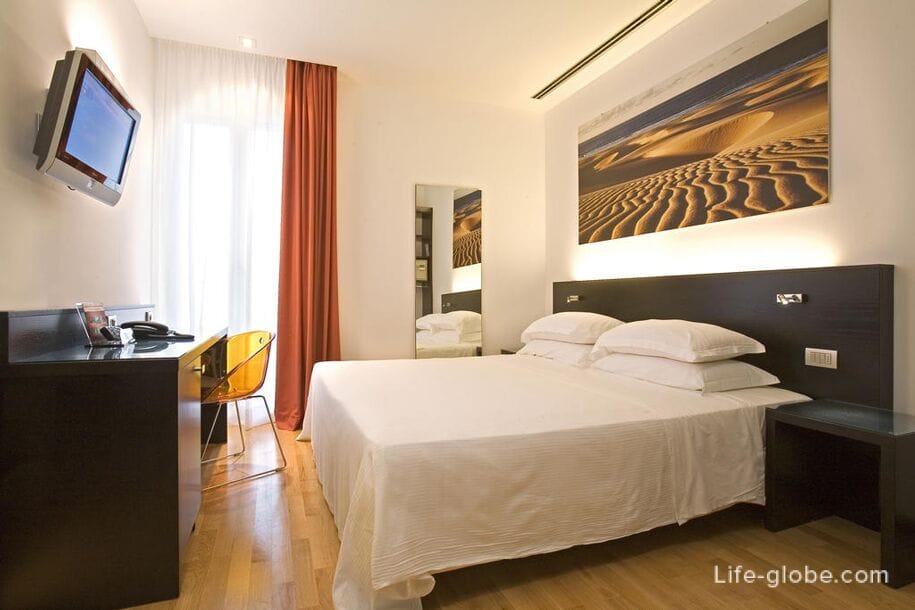
All accommodation facilities in Rimini, from budget to luxury, you can view and book here








